

Fordham’s AI Future
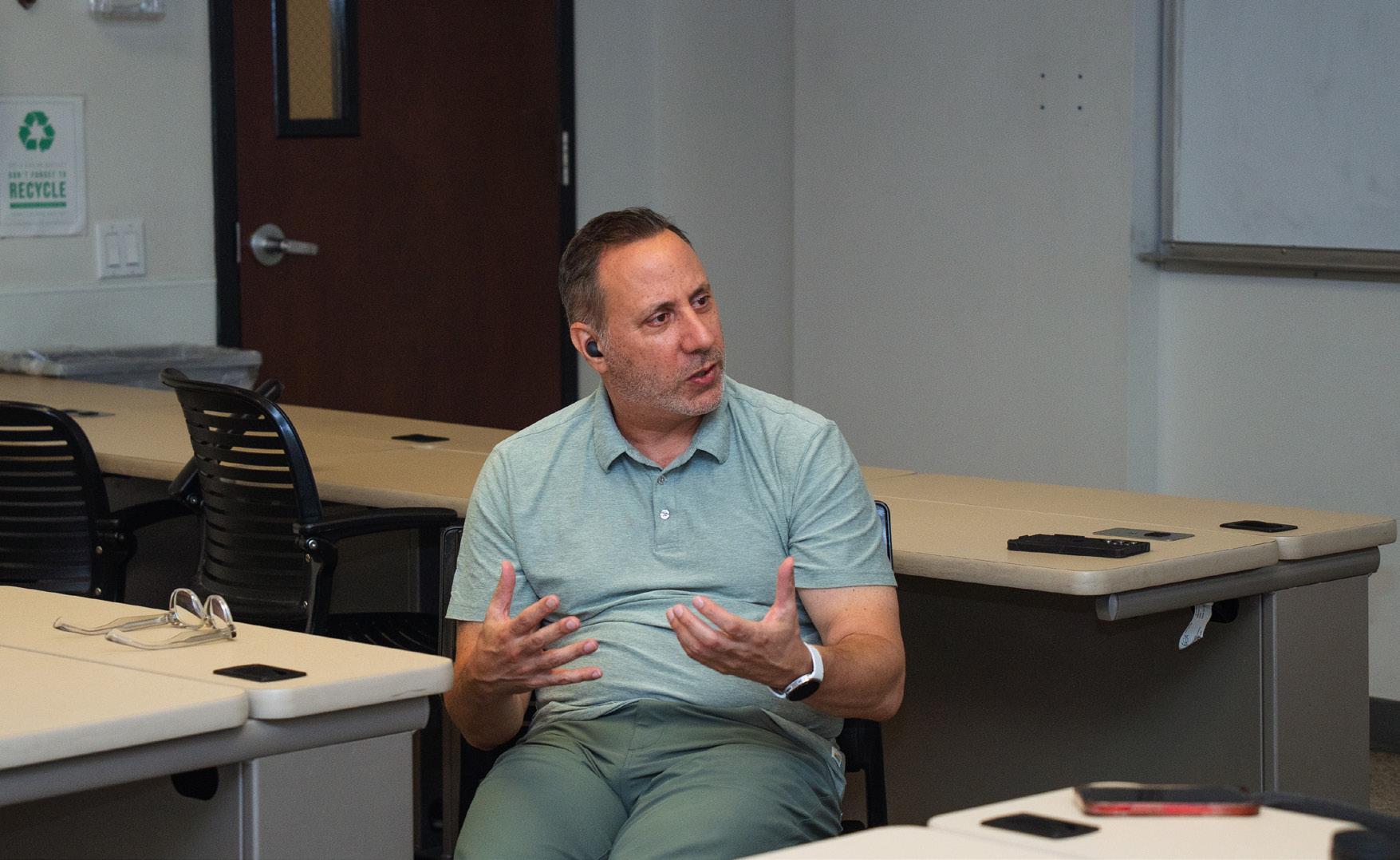
By MACKENZIE COOPER
Fordham University has received a $1 million gift from a former finance and business executive and alumnus to advance its growing fund for artificial intelligence (AI) research. This donation marks the latest in a series of major investments following last spring’s landmark $100 million science, technology, engineering and math (STEM) donation.
Peter Zangari, Fordham
University at Rose Hill (FCRH) ’89, and his wife Jennifer Zangari are donating $1 million over the next few years in order to help support interdisciplinary AI research here at Fordham.
Zangari has worked in the business industry for the last 30 years. After receiving his bachelor’s degree in economics at Fordham, he also obtained a Doctorate of Philosophy in economics at Rutgers University. He has been the vice president at JP Morgan, managing director at Goldman Sachs
and an adjunct professor at Drew University. After retiring in 2023 from his role as the global head of research and product development at Morgan Stanley Capital International, Zangari turned his focus towards giving back to the Fordham community.
Zangari is currently teaching a class at Fordham on AI and the financial markets. He said he believes that AI is a crucial part of the future and an essential subject for students to learn about.
see AI DONATION page 4
Volleyball Player Out-Blocks the Nation
By SKYLA COLLINS Contributing Writer
As of Oct. 7, Fordham women’s volleyball star player Tatum Holderied is helping lead the team by ranking as the No. 1 blocker in the nation. The Rams are currently the No. 3 blocking team in the nation, previously No. 1 as of this past weekend, according to the NCAA rankings.
Halfway through their regular season, middle blocker Holderied, Fordham College at Rose Hill (FCRH) ’27, attributes her and the team’s national success to making blocking part of
their team identity. Their assistant coach, Chris Sullivan, leads the charge.
“He puts a lot of time and effort into planning drills,” Holderied said. “He knows his players really well.”
Holderied earned the current title of No. 1 blocker in NCAA women’s volleyball by achieving an average of 2.12 blocks per set. Despite her veteran-level skillset, she did not begin her competitive volleyball career until she was a sophomore in high school.
Holderied’s personal success requires a lot of physical
and mental preparation, she said. Holderied spends a lot of time “stretching” and, in order to mentally prepare for games, she tries to “center (herself) on the court” and always tries “to be present in the moment.”
Holderied said she always tries to have fun and take advantage of the great opportunity that is participating in college athletics. Even though games can be stressful and a lot of pressure, she always tries to lead with competitive energy and a good mindset.
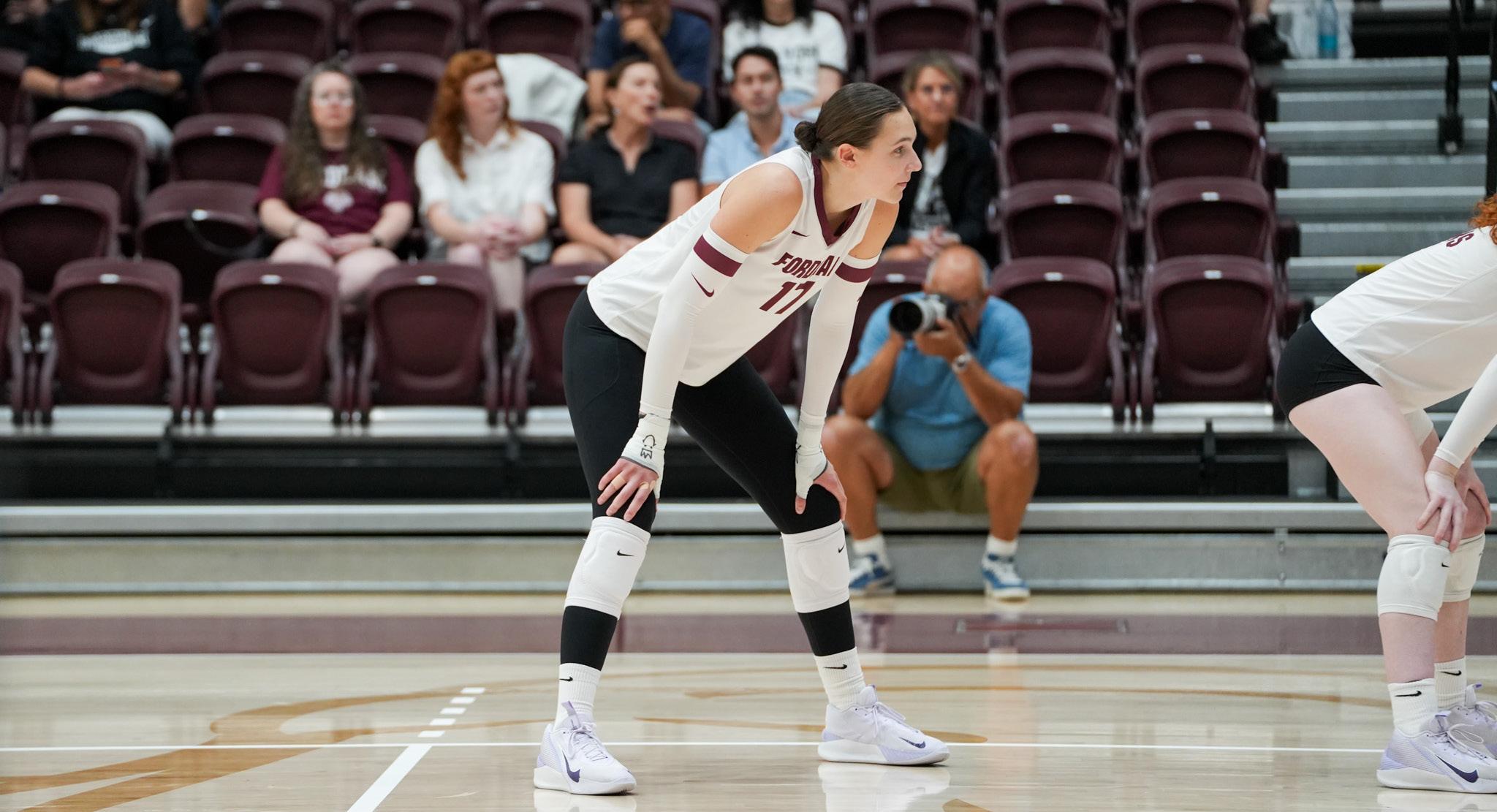
Career Readiness in the Arts and Humanities
By IZZY MARTINO Contributing Writer
“Do you want to go into teaching?” This is the immediate response I’ve heard time and time again after telling someone that I’m majoring in English. Well, either that or the more condescending, “what do you plan to do with that?” I am certainly not alone in this experience — in fact, many Fordham students who plan to major in the arts or humanities have expressed concern about career prospects, whether that be in casual conversation or in-class introductions. This long-held belief that humanities and arts degrees have no benefit post-grad has led many a college first-year away from pursuing their passions, but is it anything more than a popular myth? Is there concrete evidence to support the claim that a humanities or liberal arts degree is rewardless? In fact, there is a wealth of evidence that suggests
the contrary — recent surveys of the job market, employment statistics of graduated humanities majors and career readiness guidelines, along with the unique professional skills cultivated in humanities curricula, such as critical thinking, composition and communication.
Our current academic culture emphasizes STEM and business fields, which leads to this misconception. In colleges across the country, funding is being funneled disproportionately towards STEM buildings, classes and programs. Literature and history programs are underfunded, which can be traced back to the nationwide attempt to strip “non-productive” majors and programs from colleges in favor of economizing. In some cases, colleges like the University of Wisconsin at Stevens Point seriously considered eliminating English, history and philosophy majors altogether.
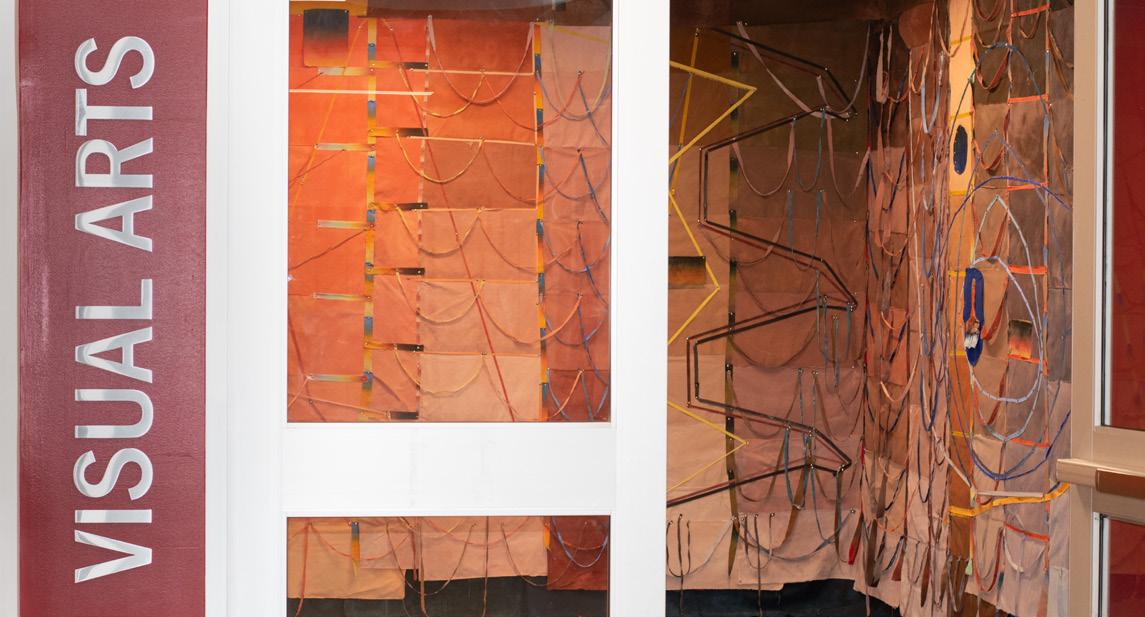
By MICHELLE WILSON News Editor
Fordham hosted a film screening and discussion honoring the centenary of the life and legacy of John McNeill, a pioneer in Catholic LGBTQ+ ministry. Panelists connected McNeill’s work to modern national, theological and political issues on Oct. 6 in the McNally Amphitheatre at Fordham Lincoln Center.
The event opened with a screening of the hour-long documentary “Taking a Chance on God” detailing McNeill’s life by filmmaker, theologian and activist Brendan Fay. Fay was also a panelist.
The film was followed by a panel discussion during which audience members could submit questions. There were around 50 attendees and the audience was primarily of an older demographic, with relatively few undergraduate students in attendance.
Michael Lee, director of the Curran Center for American Catholic Studies and professor of
theology, opened the event with a brief statement on its purpose.
“It is easy to pay lip service to the notion of human dignity. It is quite another to live it out and extend that dignity to everyone around us. It is our hope that by engaging John McNeill’s incredible legacy tonight, we might together rise to that challenge,” Lee said.
Dignity was a central principle of McNeill’s work, the documentary and the panel discussion that followed.
John McNeill (1925-2015) was a theologian, advocate, scholar and gay man who was expelled from his position as a Jesuit priest for his activism for LGBTQ+ people in the Catholic Church. He was an early trailblazer in queer theology.
McNeill enlisted in World War II at 17 years old and was taken prisoner and brought to a Polish labor camp, facing near-starvation. His experience there inspired him to enter the Jesuit order. He was ordained in 1959 here at Fordham.
Mayoral Race Mobilizes Student Involvement
The Fordham community gets engaged with the coming mayoral election
By MICHELLE WILSON News Editor
Fordham students are getting involved hands-on for their favored mayoral candidate ahead of the Nov. 4 election.
State assemblyman and democratic socialist Zohran Mamdani, former governor Andrew Cuomo, and activist and Republican candidate Curtis Sliwa will face off in the election, with Mamdani currently polling as the frontrunner. Mayor Eric Adams announced on Sept. 28 that he would drop his bid for re-election.
“ Beyond being able to take a stand to help accomplish the goals you think are good for your country or good for your neighborhood, you can also just have a lot of fun. ”
canvassing with soliciting; thus, while canvassers cannot be banned from apartment buildings, they can be removed.
Elliot Ismail, FCLC ’28, is the data director of TREEage, a student environmentalist organization that holds a variety of political advocacy events, including a mayoral forum last April, and has formally endorsed Mamdani. Ismail is from Queens and has been canvassing since he was 14 years old. He has helped organize many of TREEage’s canvassing events, teaching and mobilizing young people to canvass in-person and digitally via text and phone banking.
“I like producing code and digital aspects and processing data for outreach to make sure that, at TREEage, our staff are contacting the right people. But at the same time, I really like just going out and talking to folks,” Ismail said.
Ismail also spoke at a rally against Cuomo and for Mamdani last May about “the climate disaster and how Cuomo actively funds it and produces it,” right before the primary, followed by a TREEage canvassing event in Brooklyn. TREEage’s most recent organization-wide canvassing event was the election day for the primary.
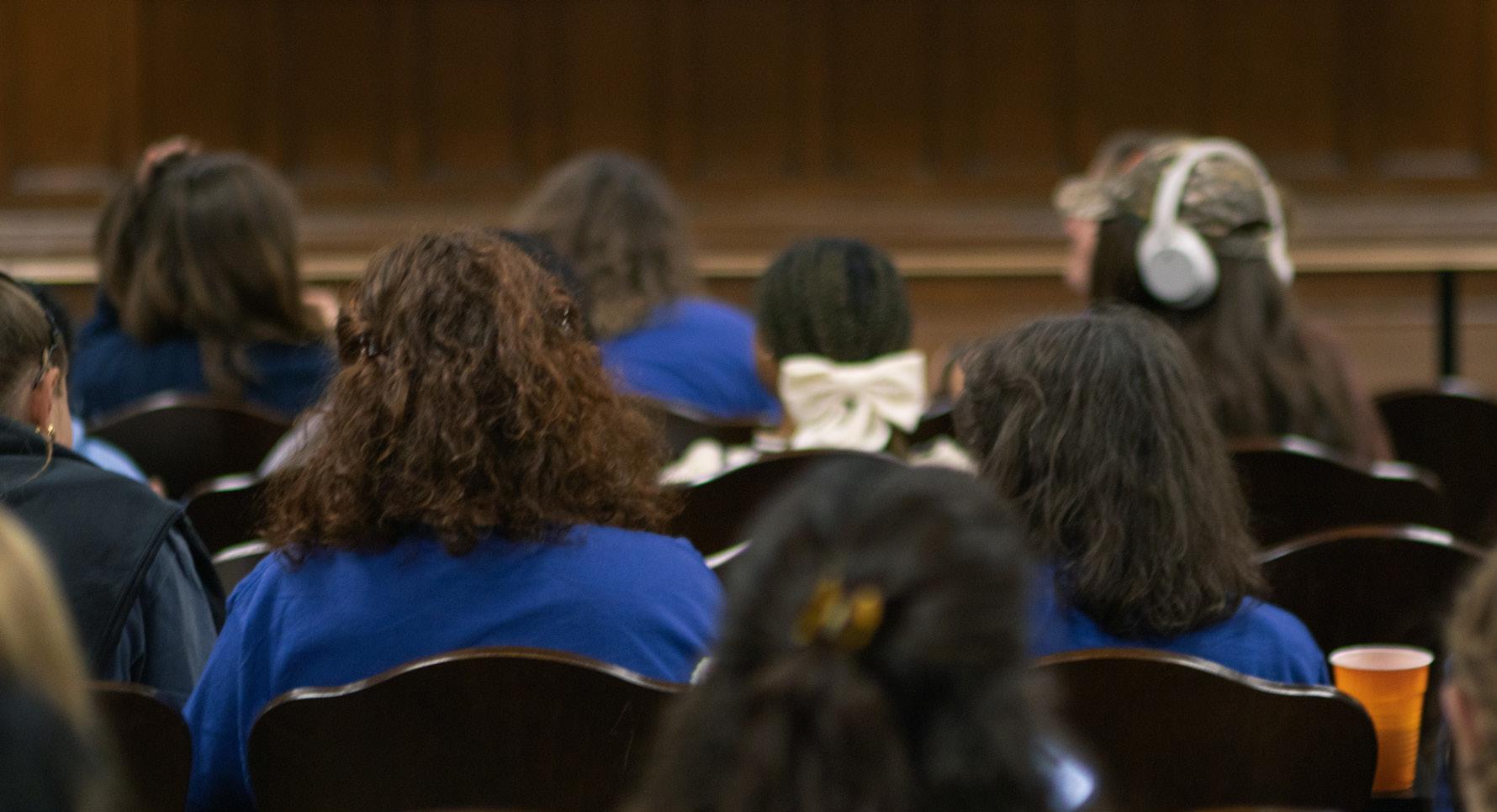
Atacus Jarrett, treasurer of the Fordham College Democrats and student at Fordham College at Lincoln Center (FCLC) ’28, has been canvassing for Mamdani for several months. He said he has been involved with the Democratic Socialists of America (DSA) since high school and is now part of the Youth DSA’s chapter at Fordham, which is not an official Fordham club. He began volunteering for Mamdani’s campaign last year during the petitioning period, when candidates must gather at least 3,750 signatures from registered voters to appear on the June primary ballot.
Canvassers are given a list of names and addresses in a neighborhood, then knock on those doors in order to elicit voters for a given candidate through direct contact.
“(While canvassing,) you can really meet pretty much everyone from all walks of society … and if you are like me — I’m not a super social guy — it really helps you overcome a lot of social anxiety,” Jarrett said. “Beyond being able to take a stand to help accomplish the goals you think are good for your country or good for your neighborhood, you can also just have a lot of fun.”
Jarrett said one challenge he has faced is that people conflate
“We’ve had events since then where we kind of talk about strategies and what folks can do on their own time where it’s like, ‘Okay, TREEage has catered and hosted XY events with Zohran’s team. Now you have the tools to do it yourself and get your schools involved,’” Ismail said.
Other Fordham clubs have also gotten involved with the mayoral election.
The Fordham College Democrats, based at Rose Hill, recently hosted an event for students to canvass for Mamdani on the Upper West Side. They are also in the process of creating outreach committees for Manhattan, the Bronx and the FCLC campus.
The Fordham College Republicans have also gotten involved, mobilizing students to attend a meet and greet with Curtis Sliwa on Oct. 2.
In terms of specific policies he values, Jarrett cited Mamdani’s focus on childcare, public transportation and affordable housing.
Ismail shared a similar perspective on affordability and MTA prices as a key issue in the coming election, and added his focus on improving public school education and climate change.
“I think the issues would be first with school infrastructure and just (Department of Education schooling in general … Obviously affordability is, I think, on top of mind for students, but for
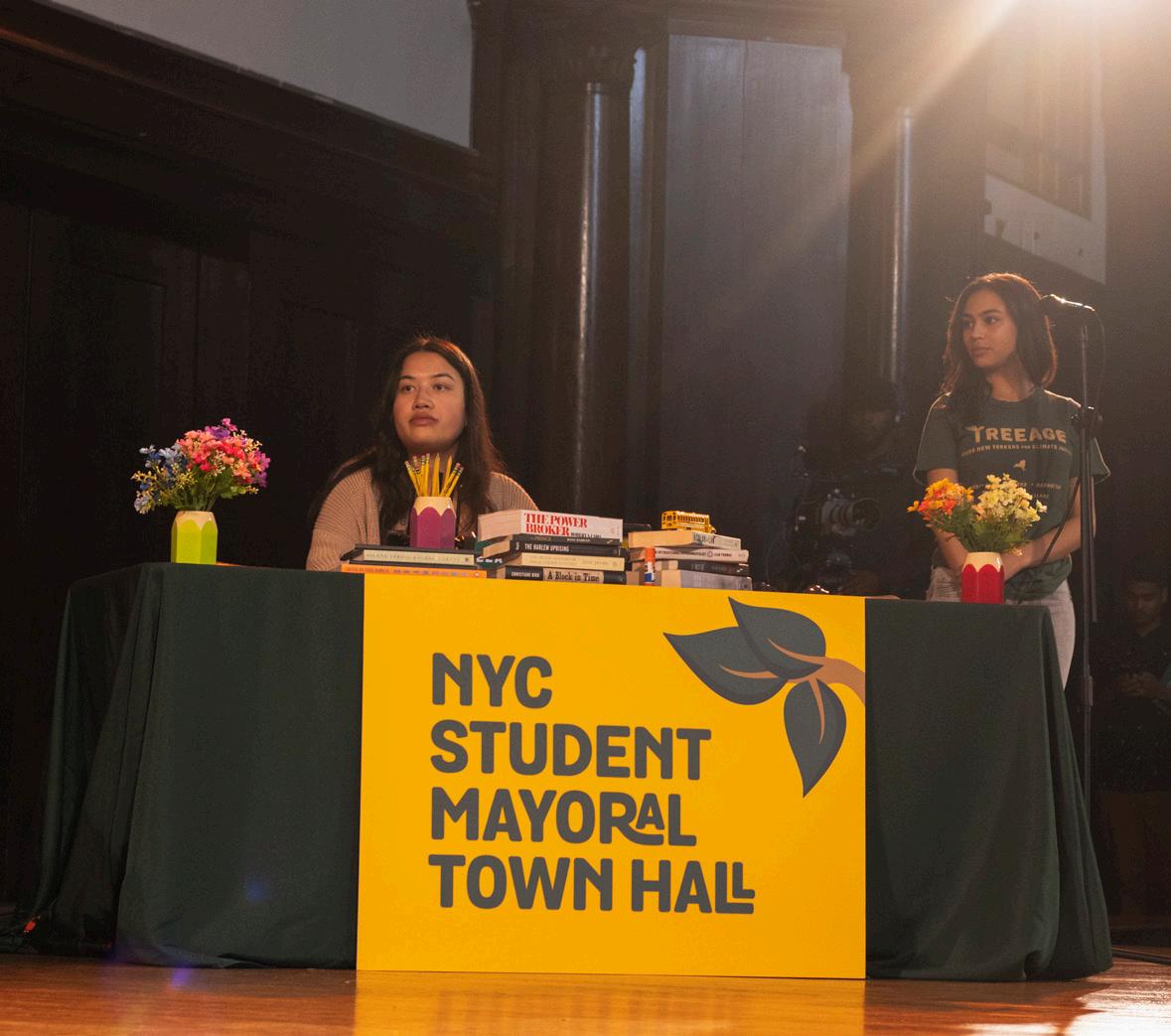
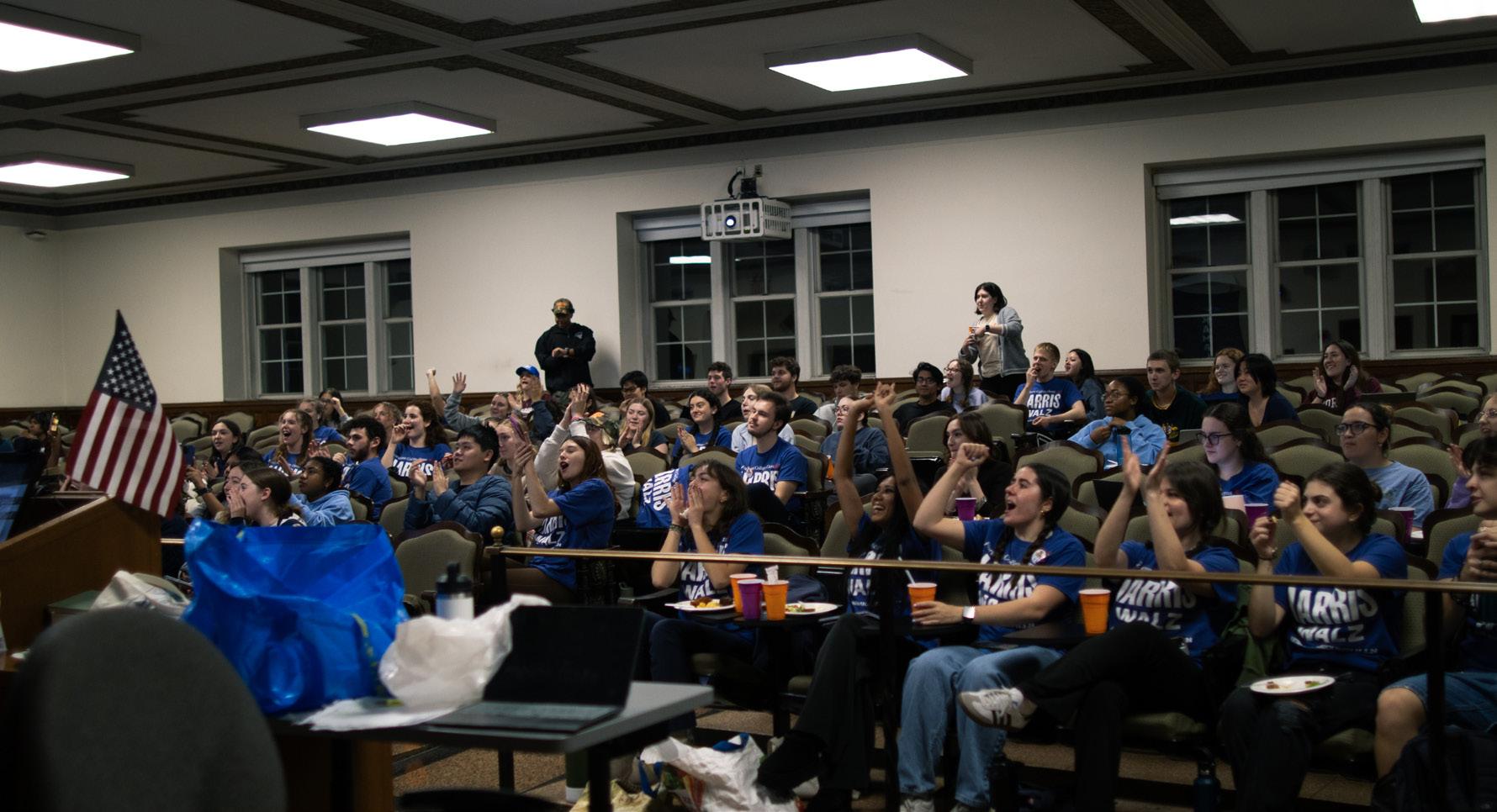
people in general … A major part is the MTA, especially the hike getting to $3,” Ismail said.
Mamdani has pledged to make buses, which serve over 1.1 million New Yorkers per day, free. This proposed policy is particularly pertinent given the MTA’s fare increase that is to take effect in Jan. 2026. Mamdani said he will also call for a rent freeze for rent-stabilized tenants and build 200,000 affordable housing units.
Cuomo’s campaign shares a focus on affordability. He has pledged to eliminate city income taxes on tips, build more housing for all income levels, and expand access to affordable healthcare. He has released a 25-point plan that details the transformation of New York City’s public education system. He has also promised to improve public and subway safety by investing in the NYPD.
Sliwa’s campaign has also focused on subway safety through the proposed hiring of 7,000 new police officers. Sliwa has a different approach to affordable housing and would like to repeal the Adams administration’s “City of Yes” housing policy — a citywide zoning amendment that aims to create around 80,000 new housing units — and update New York City’s 28,000 vacant rent-controlled units for use. As of Dec. 24, New York City’s apartment vacancy rate is a record-low 1.4%.
The candidates’ proposals have sparked discourse, with some criticizing Mamdani’s policies as unrealistic.
Jacob Smith, assistant professor of political science at Fordham, said that, should he be elected, Mamdani would have “a lot of control” over the New York City Housing Board, and expects his affordable housing policies would be implemented.
However, policies like bus fares, which may coincide with corporate and individual tax increases, will require state intervention. Governor Kathy Hochul has endorsed Mamdani, but said she may not approve tax increases. Pilot programs for free buses introduced one free bus route in each borough, and have actually decreased fare evasion.
“ (Mario Cuomo) actually talked about the idea of campaigning in poetry and governing in prose, where some promises happen exactly, and some of them don’t with any campaign. ”
Smith said he believes most of Mamdani's policies are actionable, though he acknowledged the possibility of some “being partially rolled out or over a period of time.”
“(Mario Cuomo) actually talked about the idea of campaigning in poetry and governing in prose, where some promises happen exactly, and some of them don’t with any campaign,” Smith said.
The distribution of candidates recently changed after Adams dropped his candidacy. However, his name will still appear on the ballot as he missed the May 30 deadline to formally withdraw. Adams was originally elected as a Democrat but was running as a third-party candidate after facing several indictments due to federal corruption charges, which
were later dismissed by a Justice Department judge last April.
Adams was consistently polling in the single digits (averaging around 8%), on top of his recordlow approval ratings as mayor at 20%, a Mar. 2025 poll by The New York Times and Siena University found. In comparison, while Adams was still in the race, Mamdani held a significant lead at 46%, with Cuomo at 24% and Sliwa at 15%.
Adams’ resignation sparked discourse around the extent to which voter consolidation may erode Mamdani’s lead.
Smith said that, given Adams’ poor ratings, “something major would have to happen to change the campaign at this point based on the polling lead.”
Smith estimated that only about 60% of would-be Adams voters will flock to Cuomo, with the rest being distributed between Mamdani and Sliwa.
Smith attended Mamdani’s scavenger hunt in August and said he is “pretty confident that (Mamdani is) the strong favorite in November.” He cited Mamdani’s many fundraising successes and grassroots mobilization of young voters. When asked about one of Cuomo’s campaign successes, Smith mentioned Cuomo’s various endorsements from long-standing Democrat politicians whom Mamdani has struggled to gain support from. Cuomo, Mamdani and Sliwa will face off in the Oct. 16 and 22 mayoral debates before the general election.
Fordham students can register to vote online on the New York State Board of Elections website or through the New York Department of Motor Vehicles website if they have a New York City ID, in-person at one of the Board of Elections’ offices or via mail. The deadline is Oct.
The Legacy of Queer Theology Pioneer John McNeill
Theologians discussed the life and impact of McNeill in the context of contemporary religious and secular sociopolitical issues
McNeill was heavily involved with protests against the Vietnam War. He believed that, as a Christian, he had a responsibility to be a conscientious objector.
In the 1960s, amid psychologists, politicians and the police force arresting and labeling gay people as mentally ill, McNeill published three articles in the Homiletic and Pastoral Review, a Catholic magazine. These were the first theological texts to reject traditional Christian doctrine on homosexuality and argue that same-sex relationships are “holy
“ It is easy to pay lip service to the notion of human dignity. It is quite another to live it out and extend that dignity to everyone around us. ”
Michael Lee, Director of the Curran Center for American Catholic Studies
and life-affirming.”
The articles were later published in a book, “The Church and the Homosexual,” approved by Pedro Arrupe, the then general of the Society of Jesus in Rome. McNeill had to repeatedly request said approval after Arrupe’s secretary hid his initial letters, and it was later revoked.
The book was a sensation, sparking outrage, hate mail and death threats, but above all, a huge movement of queer theology. McNeill toured the country appearing on talk shows and spoke about his experiences as a gay man and Catholic priest. Robert Carter, a fellow gay Jesuit priest, called the book the “single most important event of the 20th century for gay liberation.”
Bryan Massingale, the James and Nancy Buckman Chair in Applied Christian Ethics and panelist, described his experience discovering the book as a 22-year-old, closeted seminarian as “earth-shaping.” He checked the book out from the seminary library without using his name for fear of drawing attention to himself.
Mary Hunt, leading feminist theologian and co-founder of the Women’s Alliance for Theology, Ethics and Ritual, was also on the panel and in the film. She pointed to how revolutionary and foundational to modern theology McNeill’s work was.
“When I think about the work that the rest of us have done, we wouldn’t have done it if John had not done the work that he did. It would never have occurred to us. And to see the price he paid, I mean, it’s unspeakable,” Hunt said in the documentary.
In 1977, the Vatican issued an order forbidding McNeill to continue speaking publicly about homosexuality. McNeill obeyed the order but continued his work privately, organizing religious retreats for gay men at Kirkridge, a Christian retreat center in Pennsylvania.
However, as the AIDS epidemic reached its peak, McNeill wrote a letter to his superior saying he could no longer remain silent, and was permanently expelled from the Society of Jesus by the Vatican in response.
nowhere to live, no health insurance and no pension. Deeper still was the shame and stigma he faced from his former community. McNeill was especially impacted by the question of where he would be buried as he could no longer be buried in a Jesuit cemetery. He was laid to rest in a memorial garden at Kirkridge.
Hunt said that McNeill’s treatment by the Church was “not the exception but the rule in those days, and it is still the rule.”
“The doctrine hasn’t changed one whit, and the practice for most people has not changed,” Hunt said.
The panelists agreed that, despite over 50 years of discussion around queer theology, the Catholic Church as an institution is still engaging in what Massingale called “willed ignorance.” They reflected on how McNeill’s legacy sits within the context of recent bans on gender-affirming care for minors and other modern issues.
“The Vatican has begun developing new theologies that dehumanize transgender people. This is a development in the last 10 years that is especially harmful,” Jason Stiedl Jack, professor of religious studies at St. Joseph’s University and panelist, said.
Fay pointed to the Oct. 7 Supreme Court hearing on a lawsuit by a Christian counselor against state bans on conversion therapy. Hunt agreed. The ruling will come in June. The Supreme Court is skeptical of the ban and seems to be leaning toward ruling in favor of free speech, according to the New York Times.
“ When I think about the work that the rest of us have done, we wouldn’t have done it if John had not done the work that he did. It would never have occurred to us. And to see the price he paid, I mean, it’s unspeakable.”
“We are in the midst of, may I use the word, fascism in this country,” Hunt said. “The Catholic Church at the institutional level … has been hand in love with people who are finding profit in what's going on at the moment.”
Hunt added that Catholicism is “hopelessly behind” other religious institutions and denominations in treatment of LGBTQ+ people and women, citing queer Lutheran ministers and the new archbishop of Canterbury, who is a woman. She said she finds it “morally embarrassing” that the dignity of queer people is still being debated in a time of such political turmoil.
Ultimately, Hunt said, issues of queer theology are not about sexuality, but about how systems in the Church that encourage dishonesty impede justice.
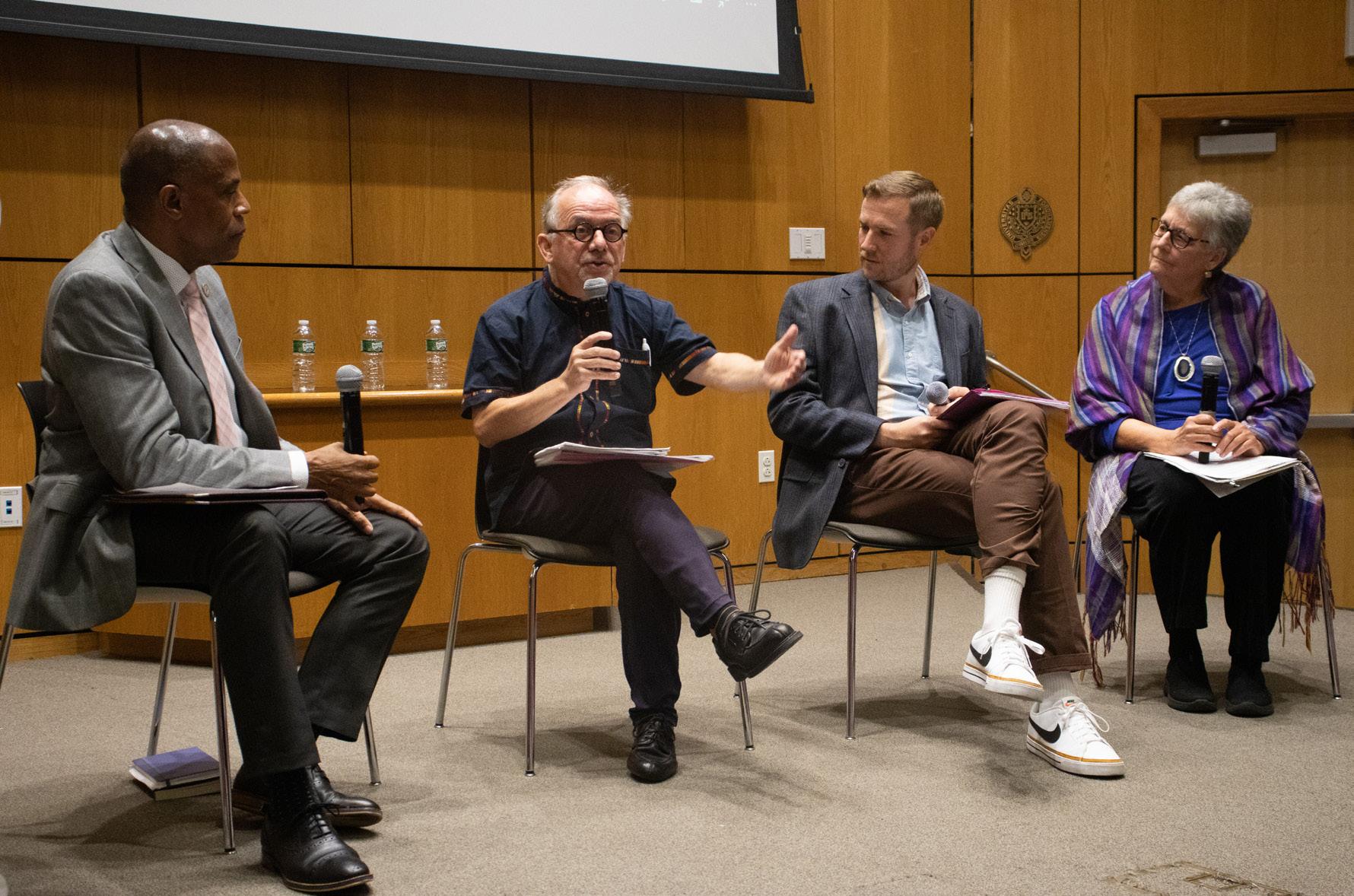
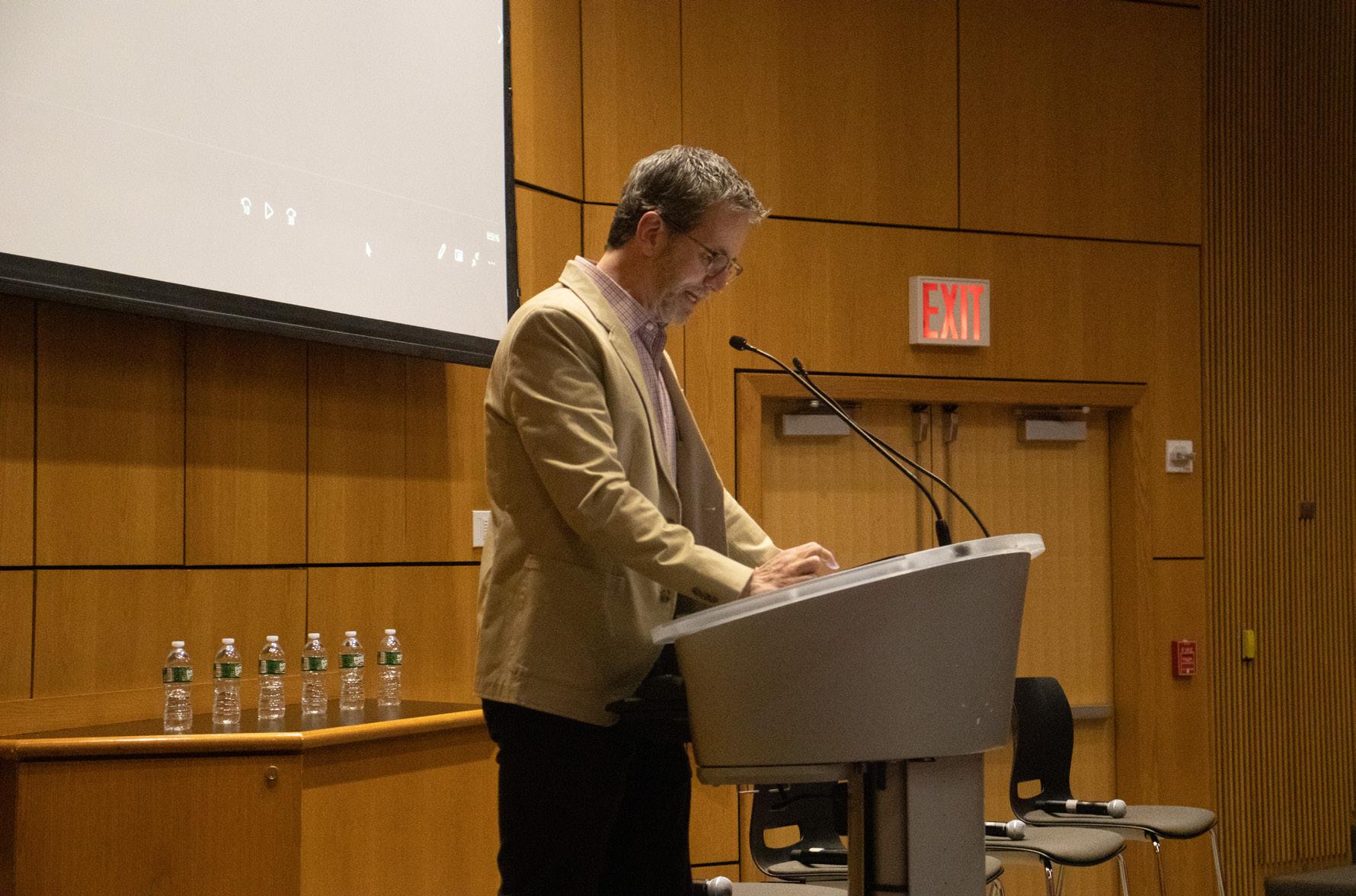
help people to lie … If we did in fact all talk about what is real, we would not be making excuses for ourselves or for each other, we would be making justice,” Hunt said.
Mary Hunt, Theologian “ (We must) create the church that we need. Sometimes that can be done within the institutional structure, a lot of times it means being on the edge of or margin of that … And sometimes it means you have to walk away outside of it and then sometimes return.”
Bryan Massingale, Panelist
change.
“We are living in a country with an ideology of white Christian nationalism, which is not simply anti-black or anti-immigrant. It’s also profoundly antiLGBTQ+. And we also know that our church leaders — at least in the Catholic Church — are not willing to challenge the purveyors of that ideology at least as long as they can respond as being pro-life, pro-traditional gender roles and anti-trans,” Massingale said.
In response to an audience question on how young queer Catholics should respond to rising conservatism in American Catholic spaces, Hunt said that, with “deep regret and with deep regard for dignity,” she encourages them to turn to other denominations and spiritual groups.
“I do not think there is a real willingness (for change) there. I don’t consider that a healthy, safe environment. I would not recommend it,” Hunt said.
Massingale echoed a similar viewpoint and said that, as a Black gay Catholic man, he “really, really, really, really, really, really struggle(s) with being a member of this Church.”
outside of it and then sometimes return,” Massingale said.
Fay and Jack provided a different perspective, arguing that the presence of young queer people with a passion for theological reform in Catholic churches is necessary in order to effect change from the inside.
Massingale offered a positive outlook on queer Catholic theology at Fordham specifically. He said that the university is at the “forefront of this movement” and, “of all the Jesuit institutions, it is probably one that is the most open and accepting.”
There is hope and positivity in McNeill’s excommunication as well in that it allowed his advocacy work to reach far more people. McNeill also had a lifelong partner, Charles Chiarelli, whom he met at a gay bar. The two were married in 2008 in Ontario, Canada.
McNeill quoted his friend Walter Wink’s positive framing of his expulsion from the Society Jesus.
“When the Vatican slammed the door on you, the wind it created will blow open a thousand other doors,” McNeill said, quoting Wink in the film.
McNeill’s abrupt expulsion by the Vatican meant he had
McNeill continued his activism for the rest of his life. His legacy can be seen in the foundational principles of queer theology and its emphasis on universal dignity, honesty and integrity as liberating and essential to justice and reform. QUEER THEOLOGY from page 1
“(People must) understand that the issue is not about people’s sexuality. It’s about their integrity, it’s about their honesty and it’s about the extent to which structures are set up to
Massingale said he agrees that “we are living in a church where the structures reward dishonesty.” He pointed to the precarity of Christian tolerance even in progressive spaces due to institutional theological resistance to
“(We must) create the church that we need. Sometimes that can be done within the institutional structure, a lot of times it means being on the edge of or margin of that … And sometimes it means you have to walk away
$1
million worth of AI for Fordham
Fordham is shifting to focus on technology, helped by new contributions towards STEM and AI programs
Fordham University has received a $1 million gift from a former finance and business executive and alumnus to advance its growing AI fund. This donation marks the latest in a series of major investments following last spring’s landmark $100 million science, technology, engineering and math (STEM) donation.
Peter Zangari, Fordham University at Rose Hill (FCRH) ’89, and his wife Jennifer Zangari are donating $1 million over the next few years in order to help support interdisciplinary artificial intelligence (AI) research here at Fordham.
Zangari has been in the business industry for the last 30 years. After receiving his bachelor’s degree in economics at Fordham, he also obtained a Doctorate of Philosophy in economics at Rutgers University. He has been the vice president at JP Morgan, managing director at Goldman Sachs and an adjunct professor at Drew University. After retiring in 2023 from his role as the global head of research and product development at Morgan Stanley Capital International, Zangari turned his focus towards giving back to the Fordham community.
Zangari is currently teaching a class at Fordham on AI and the financial markets. He said he believes that AI is a crucial part of the future and thus an essential subject for students to learn about.
“The reason why AI is important for many people, including Fordham students, is because it’ll be interweaved into our lives. And importantly for students today … you’re at a lucky time because, you know, firms are (in) the early stages of adapting to how do they incorporate AI into their business, into their practices,” Zangari said.
In the past, Zangari has been a guest speaker at Fordham’s Gabelli School of Business here at Lincoln Center, offering advice to business students.
His donation complements the university's Strategic Plan, found on the “About Fordham” page of the university’s main website, which states:, “We can become more Jesuit by centering our students and improving their outcomes. We can better embody a full university by investing in STEM, breaking down silos, and coming together across fields.”
Zangari described the processes behind developing and implementing his contribution to Fordham’s AI research development.
“I met with the provost and a few other people, and they presented the idea in terms of what they want to do with this ‘innovation hub’… and I thought it
was very interesting, because my particular interest once I left my previous career … is to make personal investments into early stage companies that focus on AI,” Zangari said.
Using the experience he has gained over his 30 year career, Zangari wants to help invest in future generations, starting with the Fordham community.
“I think that this has a real opportunity for us to make targeted, important investments that the faculty can benefit from, that the students can benefit from, and then importantly, the broader community can benefit from,” Zangari said.
Zangari has further served the Fordham community as a member of the university’s President’s Council. Founded in 2004, the President’s Council brings together established alumni, ranging in careers from finance to law, to return to Fordham and mentor new generations of young leaders. Zangari believes that the President’s Council is a good opportunity for Fordham alumni to learn more about changes being made to the university.
“It’s a good forum to discuss important high-level matters at the university, and it’s a good opportunity for someone like me to kind of, in quotes, better understand what the university is thinking right … before it goes into practice,” Zangari said.
The council also helps bankroll the Fordham Founder’s Undergraduate Scholarship Fund, which is one of the largest financial aid awards Fordham undergraduates can receive.
The $1 million donation comes after the $100 million gift that Fordham received last spring to transform the university’s STEM research programs. The gift, made by Maurice and Carolyn Dursi Cunnifie, two Fordham alumni, is the largest Fordham has ever received. It will fundThe new STEM initiatives will include the construction of a new, 200,000 square foot science facility at the Rose Hill campus. The is building will featuringe teaching labs, research spaces, student lounges and green space all for the use of the Fordham community.
The gift is intended to expand the STEM degree programs, increase the enrollment of STEM students and allow students to gain hands-on experience with partnerships at the Albert Einstein College of Medicine and Memorial Sloan Kettering Cancer Center.
Among these new developments, Fordham administrators have also taken steps to draw lines on the usage of AI. On May 2, University President Tania Tetlow gave a TED talk on the future of Artificial Intelligence and the way that Jesuit principles


are intertwined with the maintenance of human wisdom.
“The Jesuits teach us the principles of discernment. They were renowned for the quality of their decisionmaking—that is why they have flourished for centuries,” Tetlow said. “The first step of discernment is to take a decision that really matters and give it the time that it needs to avoid jumping to conclusions, to be truly open to all possibilities. And that is harder than it looks right that's where AI is better than we are at remaining open.”
In her speech, Tetlow reminded her audience that there are positive and negative sides to AI.
“We can’t rely on AI because it turns out that the data often for excruciating decisions is available for both sides. I am a lawyer. I can argue perfectly logically and passionately for either side of every decision. I’m very good at it,” Tetlow said.
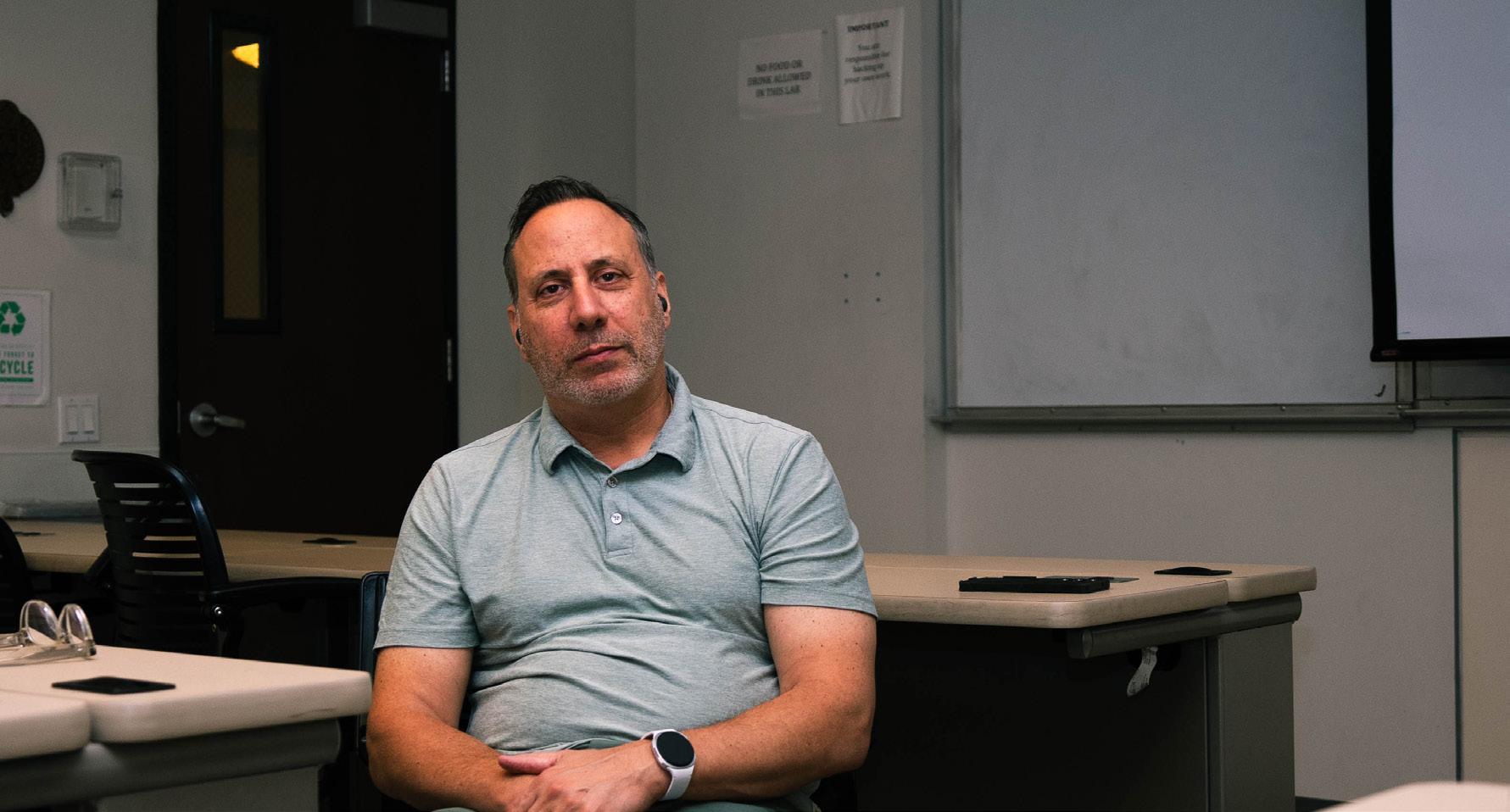
In June 2023, Provost Dennis Jacobs established Fordham’s Artificial Intelligence Vision Committee. The committee is
“ We can’t rely on AI because it turns out that the data often for excruciating decisions is available for both sides. I am a lawyer. I can argue perfectly logically and passionately for either side of every decision. I’m very good at it. ”
Tania Tetlow, University president
responsible for looking over the policies, plans of action and safety tools in place to help Fordham benefit from generative AI tools and leverage them to improve teaching and research.
“As New York’s Jesuit University, Fordham is uniquely positioned to integrate generative AI into its ethos. By emphasizing ‘Cura Personalis’ and adopting the principles of RomeCall, Fordham can prioritize AI ethics, social justice inclusivity and individual well-being,” the committee’s proposal states.
According to Fordham’s Teaching and Learning in an Era of Generative Artificial Intelligence Handbook, Fordham faculty have the opportunity to choose their classes’ policies regarding the use of AI.
“Faculty need to clearly
communicate the degree to which it is unacceptable for students to use (generative AI) tools in their course. The course syllabus is an ideal place to communicate such expectations,” the handbook wrote.
Fordham has a Faculty AI Interest Group that brings together faculty and the Educational Technology and Research Computing team of the Office of Information Technology to collaborate on AI-related matters.
Fran Blumberg, professor of psychology at Fordham, currently serves as one of the co-chairs of the AI Interest Group. She explained in an email that the group meets on a regular basis, and for this academic year, they will meet once per semester. While they do not handle AI policies, the group works together to consider how best to educate faculty about what AI programs are available here at Fordham.
“This group is very informative and has a consistent group of faculty and staff attendees, including non-tenure track faculty,” Blumberg said. All the board members are faculty in different departments here at Fordham such as communications, business, modern languages and law.
The list was last updated on Jan. 28, 2025, and contains professors who no longer teach at Fordham. As of Oct. 6, the list remains unchanged.
Current professors listed as members of this group were contacted by The Observer and were admittedly unaware of the existence of their position and, therefore, unable to comment.
As Fordham expands their STEM programs, the policies on the use of AI here at Fordham may be updated as AI in classroom settings continuously evolves.
Fordham’s Civic Service Reflects Jesuit Roots
Fordham students and faculty met in the Bepler Commons at Rose Hill to discuss mission-based living
By PARIS MATHUKU & MICHELLE WILSON Asst. & Head News Editors
Fordham students, faculty and staff continue to uphold Ignatian values through civic engagement on a personal, university, citywide and international level. The “Common Grounds Conversation: Living the Mission” panel outlined how such members live out Fordham’s Jesuit mission through their work in the Bepler Commons on the Rose Hill Campus on Oct. 2.
The panelists discussed their personal experiences and how they guide students in mission-based living, followed by break-out sessions allowing attendees to reflect on guiding questions such as: “Reading Fordham’s mission statement, what stands out to you?” and “What concrete steps can we take to advance Fordham’s mission?”
Being a Jesuit university, civic service and the promotion of social justice have long-standing roots in Fordham’s core values and mission. For many students, faculty and administrators, this is a daily lived reality.
John Cecero, vice president of mission integration and ministry and a panelist, described his interpretation of the Jesuit call to action as one of both personal faith and external engagement. He noted that these values are a common thread running through nearly all aspects of Fordham life.
“I live out my Jesuit mission first of all by maintaining a familiar relationship with God … then by engaging with people and students, and faculty and staff,” Cecero said. “I think Fordham makes every effort in the
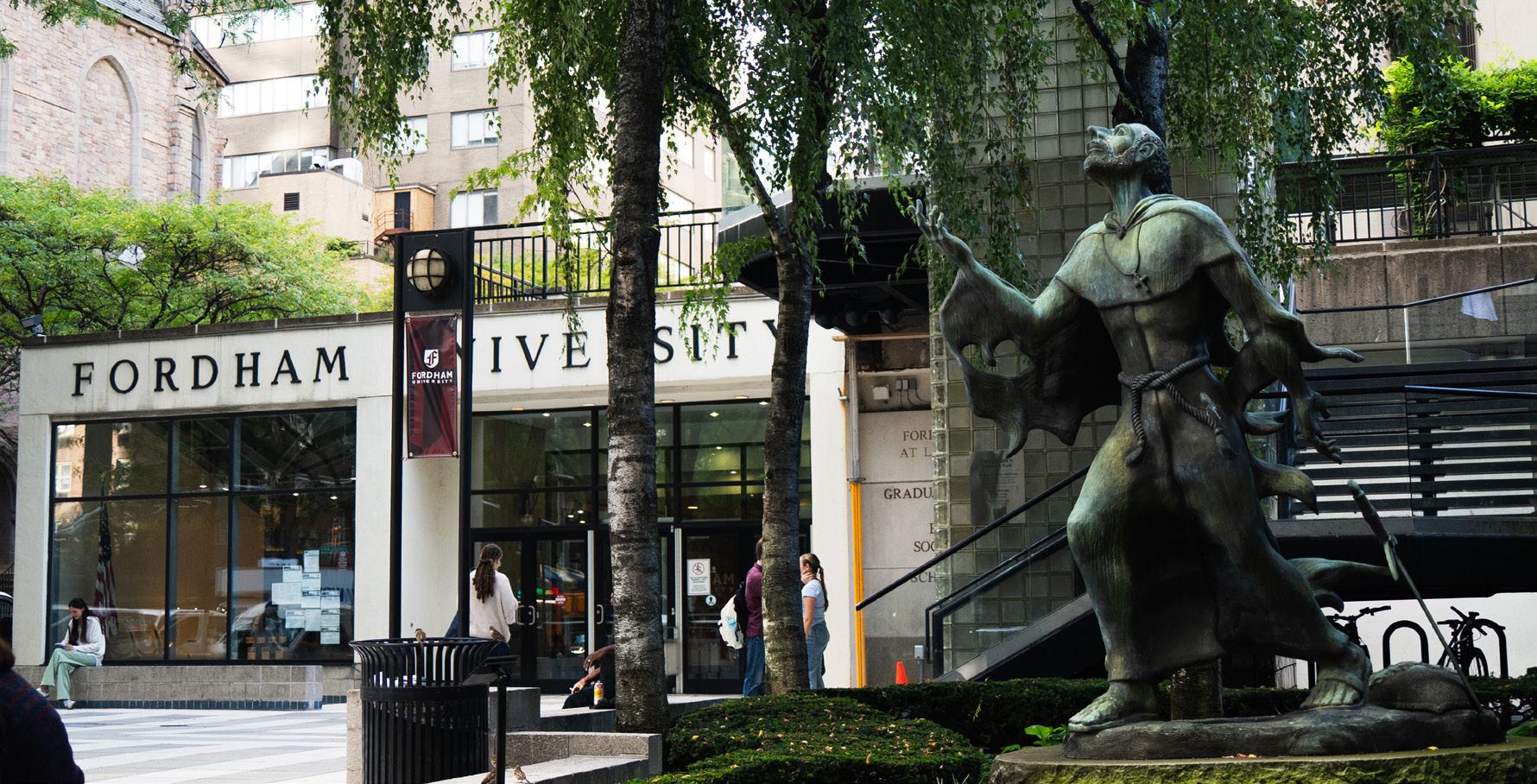
classroom, in the research labs, in relationships between faculty and students and all of the services that we provide … to strengthen and sustain our Jesuit identity and mission.”
Eleanor Smith, Fordham College at Rose Hill ’26, attended the event and shared a similar perspective on how the Ignatian emphasis on civic service affects her daily life as an individual, and specifically as a Fordham student.
“As a Jesuit school, Fordham does a lot to instill the Jesuit mission in its students … there are a lot of service opportunities and spiritual opportunities, both on and off campus,” Smith said. “I live the Jesuit mission in my everyday life by venturing out into the world outside of Fordham and just interacting with people and taking opportunities
that I find to make the world a better place.”
This outreach is seen at Fordham in ways both small and large.
The Pedro Arrupe Volunteers (PAV) is a Bronx-based, student-led organization that coordinates direct service and engagement programs. In the last month, PAV has held volunteer events like a clean-up project at Moshulu Park in the Bronx, preparing backpacks to donate to students in need, volunteering at the Belmont Catholic Community Center to help with an event celebrating Latine heritage and more.
Fordham has several other long-standing partnerships with local nonprofits, including the Church of Our Lady of Mercy, Part of the Solution and Creston Avenue Baptist Soup Kitchen in the Bronx, and St. Paul the
Apostle’s Loaves and Fishes food pantry and Xavier Mission in Manhattan.
The Fordham community’s civic service efforts extend globally, past local city programs. Cecero expressed hope that deepening global partnerships with other Jesuit universities could further extend Fordham’s mission.
“One way that we can improve or increase this would be through our global partnerships with the Jesuit universities that exist throughout the country and around the world,” Cecero said.
On Aug. 4, the Global Research Alliance of Jesuit Universities (GRAJU) was formally established. Fordham is one of the seven founding Jesuit institutions around the world. GRAJU aims to deepen global collaboration on solution-focused, interdisciplinary research in service of leveraging
Ignatian values to address global concerns. The organization’s work will kick off with an inaugural symposium in March discussing how emerging AI technologies can be leveraged toward positive change, and how this relates to the particulars of a Jesuit education.
Fordham also has a Global Outreach program that has been active since 1962, organizing immersion service trips for students. One upcoming program is the winter trip to Arizona to assist the Kino Border Initiative, a Jesuit organization focusing on humanitarian assistance and holistic accompaniment of migrants.
Smith praised the many service programs and the spirit of social justice abound on campus, but suggested that the university can do even more outreach to get non-Fordham community members involved.
“Something that I think that Fordham could do to improve their Jesuit mission is to increase access to Fordham’s resources for people who aren’t connected to the Fordham community yet,” Smith said. “One way that they could do this is by hosting more events on campus that are open to people who are not from Fordham and then advertising them and making it easier for people to come onto the campus through the gates.”
Fordham’s service programs and collaborations continue to expand — anchored in reflection, service and justice — and ever-mindful of emerging needs. From serving in New York City to international collaborations, the Fordham community upholds its commitment to the Jesuit mission in modern ways.
Chuseok and Mid-Autumn Festival Celebration
Fordham students gathered together before the full moon, giving thanks for family, friends and mooncakes
By SOPHIA STEPHAN Assistant News Editor
The Korean Student Association (KSA) collaborated with the Chinese Cultural Society to organize their annual combined Chuseok and Mid-Autumn Festival celebration on Oct. 3. Fordham students from all backgrounds gathered on the Lincoln Center campus to learn, connect and give thanks together.
Chuseok, described in KSA’s presentation as “Korean Thanksgiving,” is a holiday where friends and family come together as a community to hold a three-day celebration around the full moon. KSA President Rachel Kim, Gabelli School of Business at Lincoln Center ’26, explained the significance of the theme “belonging.”
“Coming together as family, friends and community to celebrate … belonging,” Kim said. “I think that’s universal, whether you’re Korean or Chinese or anyone.”
Linh Pham, Gabelli School of Business at Rose Hill ’27, and her friend Catherine Topps, Fordham College at Rose Hill ’26, traveled from the Bronx campus to participate in the festivities. Pham and Topps described how the event brought back “good memories.”
“I didn’t start celebrating until eighth grade with my Chinese friends, so I always think of them,” Topps said. “I’ve only been able to come to one event for Chinese Club so far, and that was last year, so it's always nice to have the opportunity to come here and learn more about the Chinese language, Chinese culture (and) eat Chinese food, most importantly.” Pham, an international student
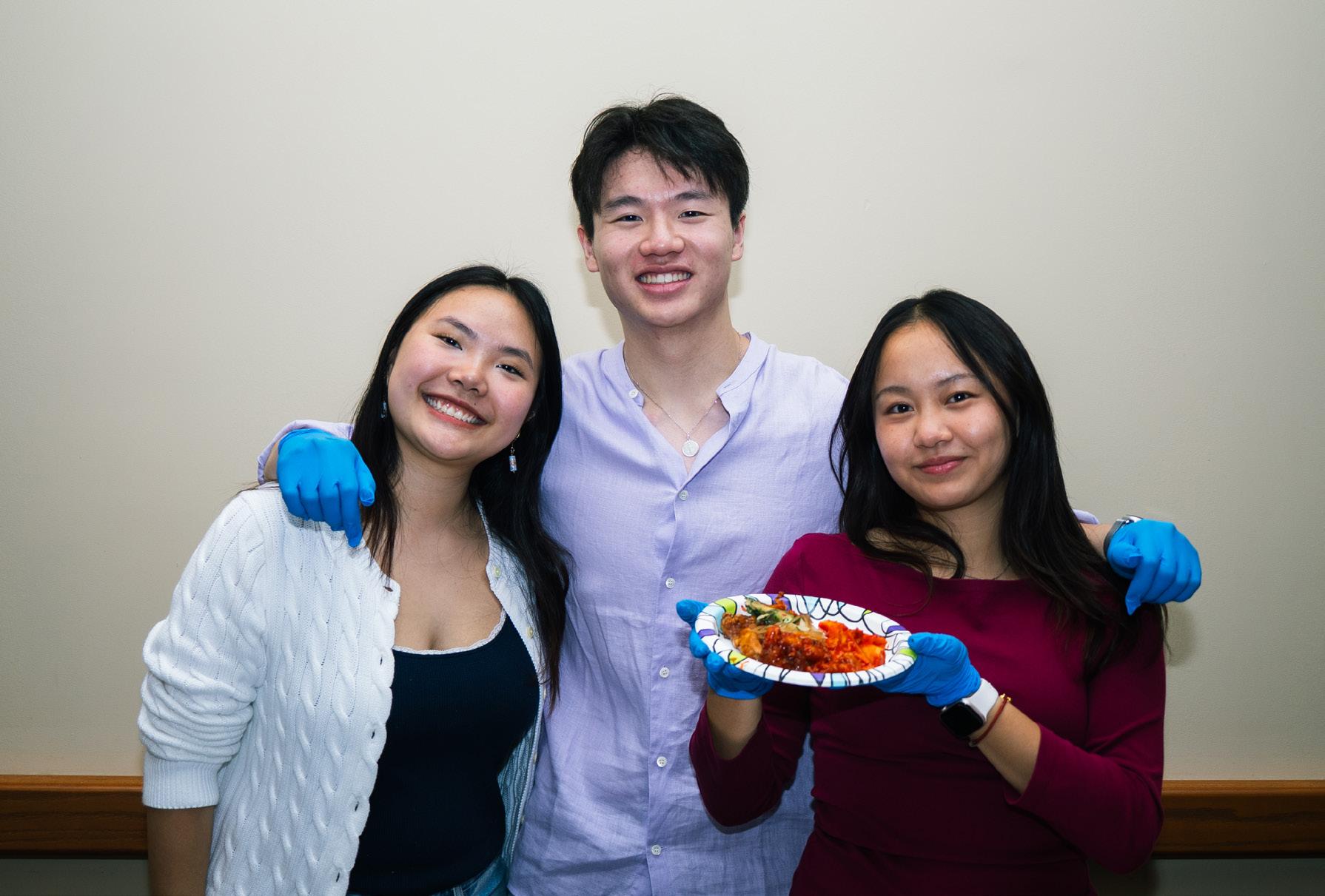
from Vietnam, explained how the celebration reminded her of the family and friends she would celebrate with in the past.
“We usually (did) some kind of small events together … we (ate) moon cake and we (would) hang around,” Pham said. “I moved here in 2023, so I kind of miss home, and during this occasion, if we don’t do some kind of formal celebrating, we would just go out and eat a meal together, so definitely being around people reminds me of home.”
Gratitude and community were prevalent themes for the festival
attendees. Brian Tong, Fordham College at Lincoln Center ’26, explained the significance he finds in the holiday’s connection to the moon.
“There’s something that's connecting about the moon and it reminds us of friends, family, loved ones,” Tong said. “When we look up and we see that moon, it’s the same moon that everyone sees … even when I’m in college and I’m away from everything that I know, (I’m) going to be looking at that.”
Tong also described the impact that celebrating with the Fordham
community has had on his “desire to learn more” about other Asian cultures.
“Celebrating with the Fordham community has (allowed) me to learn more about the culture that I wish I had the chance to grow up with,” Tong said. “It fostered a strong community of people that had the same desires … to grow together and to satiate that hunger of curiosity.”
Kim shared this sentiment and said she finds the Fordham community’s enthusiasm to learn more about Korean culture inspiring.
“It’s so nice seeing people enthusiastic about learning,” Kim said. “Honestly, I feel like Fordham students are really good about learning about new cultures and embracing diversity.”
When she was younger, Kim found that the younger people around her were “more adverse” in “getting to know new cultures.” Now, with the rising popularity of Korean media like K-pop and K-dramas, Kim said that the United States’ interest in Korean culture has “been growing steadily.” Kim said that this engagement can be both positive and negative.
“You can see other countries so easily on social media,” Kim said. “I think it’s good that people are learning more about other cultures. But it could (also) be bad where you see one person say one thing and you’re like, ‘Oh that must be a fact,’ (but) not all Korean people have the same idea.”
Kim explained the importance of attending cultural events such as Chuseok and Mid-Autumn Festival to expose oneself to different perspectives that provide “context and history” on the “culture and tradition” of cultures outside of one’s own. As president of KSA, Kim wants to inspire students to be more open to cultural exposure.
“I hope people go home knowing more and being open to learn more,” Kim said.
Chuseok and the Mid-Autumn Festival fall on Oct. 6 this year, the 15th day of the eighth month on the lunisolar calendar. Events across New York City kicked off over the weekend for various prolonged mid-autumn celebrations.
Sports & Health
Survivor Pools: One Pick, One Shot
This sudden-death fantasy football format is built for college students
By ANAISA GORBEA
Contributing Writer
Fordham students are always busy, often juggling classes, working or participating in extracurriculars. Add in the constant temptation to scroll on TikTok and it is clear why most fantasy football formats do not fit our schedules. Draft leagues? Too complicated. Dynasty leagues? Forget it.
But survivor pools? That is right up a college student’s alley.
Survivor pools strip fantasy football down to its simplest form. You pick one NFL team to win each week. If they win, you advance. If they lose, you are out. No lineups, no injury reports, no endless trade negotiations. Just one decision, one week at a time. And in college, survivor pools are not just fun — they are the best draft option out there.
Attention spans are short, time is limited and no one wants to commit to something that feels like another homework assignment. Survivor pools fit seamlessly into that world. You can stay competitive without being chained to ESPN stat sheets.
Draft leagues are the classic format where you pick a full roster at the start of the season and then spend months swapping players and checking injury reports. Dynasty leagues crank that commitment even higher: You keep most of your players year after year, which means you are basically signing up for a second job that lasts longer than some college relationships. Both formats demand constant attention and way too much research for anyone
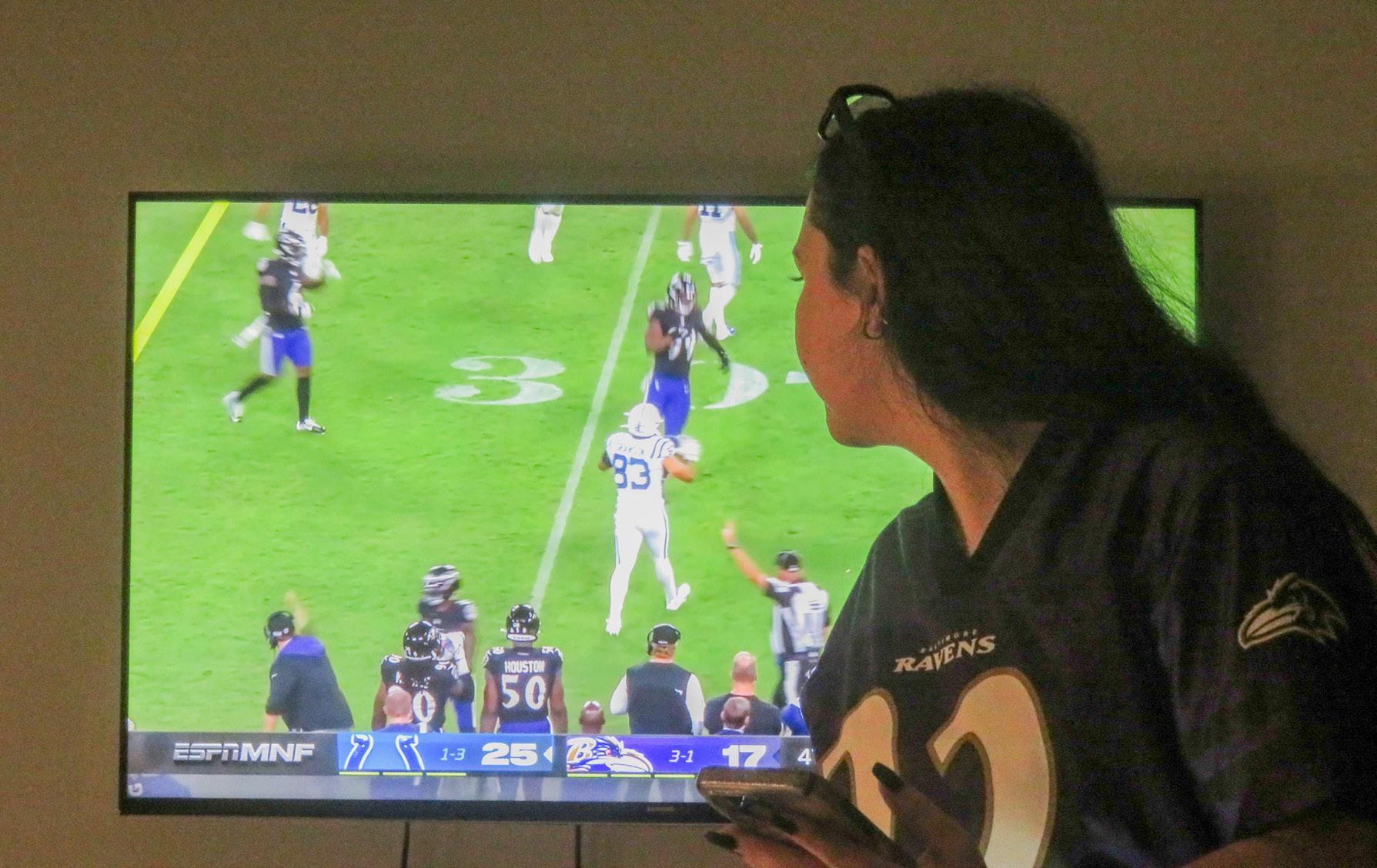
With survivor pools, depending on your pick, one week you are in and the next week you could be out.
already drowning in assignments. Survivor pools, by comparison, are the opposite: They are fast and decisive.
The beauty of survivor pools is how little time they demand.
Unlike traditional fantasy leagues, you do not need hours of research to make a halfway decent decision. In fact, all the research you need is already sitting on your phone.
On Reddit, the “r/sportsbook” threads have posts you can join where people are debating their weekly picks. The conversation is messy, but also comforting. You are not alone; you have an
army of strangers making the same gamble.
Another perk is that you do not need outside input to play. Unlike draft or dynasty leagues, where you are almost forced to lean on rankings, experts or podcasts just to stay competitive, survivor pools can be done completely solo. If you trust your gut, you can make your weekly pick without scrolling TikTok or checking Reddit. It is one of the only fantasy formats where your instincts are enough, which makes it way more accessible for students who just want to play on their own terms.
Here is the underrated part: Survivor pools are pure adrenaline. Draft leagues are a slow burn; you might spend weeks watching your roster crumble under injuries or bad trades. Survivor pools do not let you drag it out. One wrong pick, and you are done.
When your team wins, the victory feels way sweeter than squeaking out a win in a draft league matchup. And when you are still alive in week six or seven while your friends have all been knocked out, the bragging power is unmatched.
Fantasy football purists argue that survivor pools are too unforgiving, but that is exactly what makes them manageable for students. If you get bounced early, you do not have to babysit a lineup for the rest of the season. You are free to move on without guilt, unlike in draft leagues, where you either commit or become the friend who “forgets” to set their roster by week four. Survivor pools let you stay in the action without chaining you to your phone every Sunday.
Of course, the biggest downside is that once you are eliminated, you are done for the season. One bad week and you are stuck on the sidelines watching everyone else play. But it adds to the fun when you have a whole group either cheering on friends still in the game or laughing at you when you are eliminated. No matter what, you are still part of the fun one way or another. Honestly, there is something refreshing about the simplicity. College already throws enough complexity at us: deadlines, group projects. Survivor pools cut all that out. One pick. One shot. Done.
At the end of the day, college fantasy football should be fun, not a chore. Survivor pools are fast, dramatic and perfectly tailored to the way students actually live and play. They do not just keep you in the game; they make the game worth playing.
So while everyone is stressing over their 12-man draft, I will stick with my one pick a week. No spreadsheets, no headaches, just pure, chaotic fun.
Science Says Exercise Helps Your Bad Grades
Daily exercise is scientifically proven to increase academic performance and reduce stress
By CATHERINE RAIMONDI Contributing Writer
It is easy to be overcome by stress at this point in the academic year. Club activities are in full swing, midterms are around the corner and office hours slots are becoming hot commodities. The nonstop grind is overwhelming and would urge any student to want to curl into bed and doom scroll on TikTok, but an alternative would certainly be more productive. Exercise is the antidote to help increase academic performance, reduce stress and stay in shape overall.
The mental health benefits of exercise are often overlooked. Working out releases endorphins, chemicals within the body that improve wellness. These mood-enhancing chemicals help distract from stress and overall improve confidence levels. Taking time for yourself to decompress is an important part of maintaining a strong psyche. Exercise is a beneficial way to do that.
A study published in The Lancet’s psychiatry journal found that people who exercise have 43.2% fewer poor mental health days a month than those who do not exercise. Exercise is not a bulletproof cure for all bad days, but it does appear to reduce the frequency of being in a low mental state.
The National Institute of Health’s (NIH) meta-analysis of 49 studies that link better mental health to exercise found that those who are physically active are less likely to develop depression. The recurring sentiment within these studies is clear: Some exercise
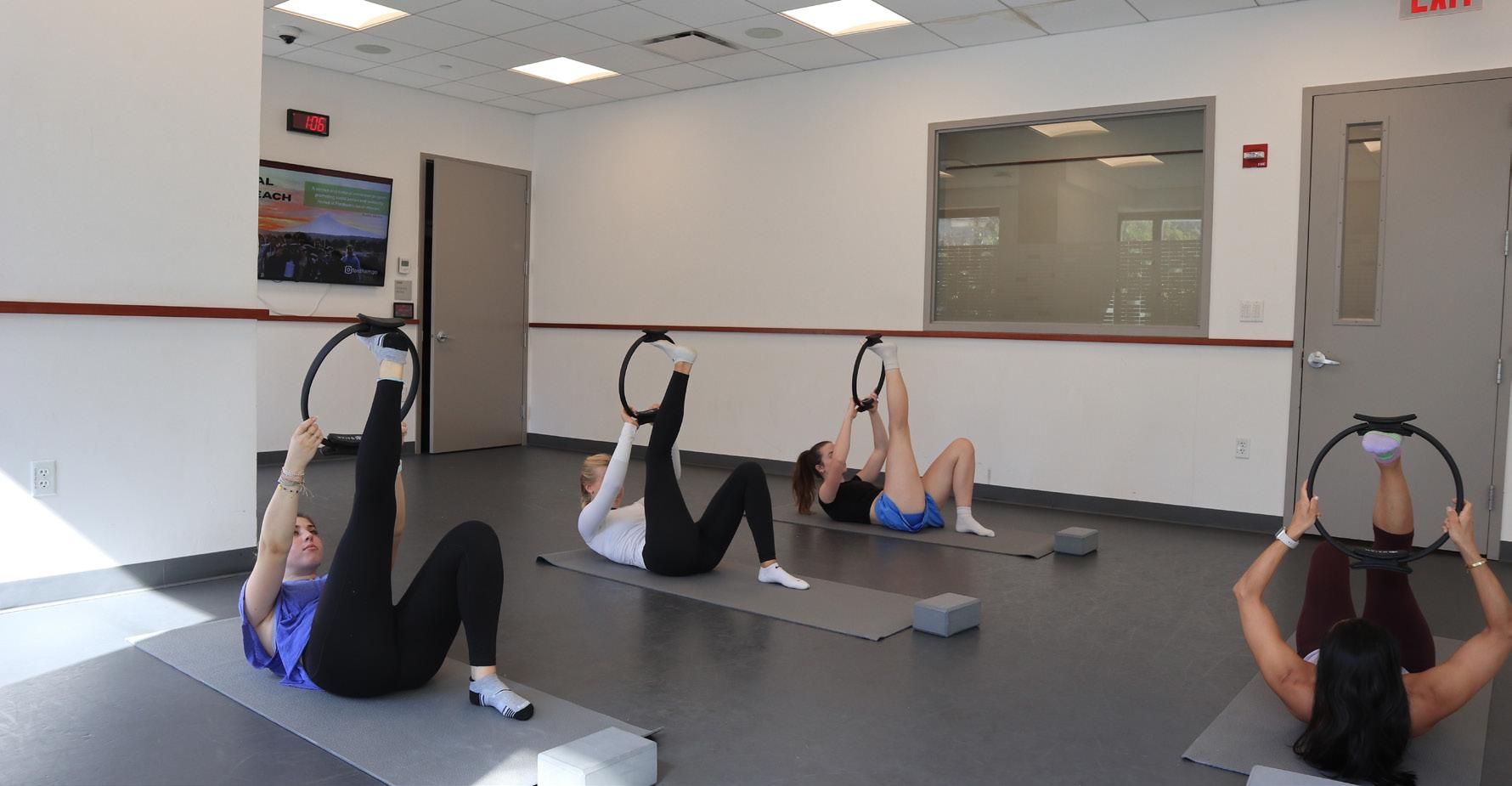
each day will keep you happier and healthier. Exercise is also directly correlated to an increase in intellectual engagement and academic performance. Another study published by the NIH worked to find the relationship between physical activity and academic performance among university students. Through oxygen rates, the study found a direct relationship between higher academic performance and physical exercise.
Maggie Reef, Fordham College at Lincoln Center (FCLC) ’29, feels the connection between academic performance and physical exercise. Her academics benefit from her exercise not only through an enhanced academic performance, but also through her increased productivity levels.
“(Working out) definitely improves my motivation because if I work out, I get put into a productive mood to do other things,” she said. Ultimately, motivation from exercise carries over into academics, keeping you at the top of your game while you study and complete assignments.
Fordham offers students many opportunities to work out for free. RamFit is an on-campus gym with both cardio and strengthbased workout options. Sarah Kahl, FCLC ’29, uses RamFit as an outlet to “distract (her) from all the stress of (her) schoolwork.”
RamFit offers weekly classes that will both build strength and community. The schedule includes multiple options: Lean and Tone classes, Pilates classes
and yoga. More details regarding the schedule can be found on the Fordham Lincoln Center Fitness Page, where you can join the Google Calendar to get updated RamFit class times.
Living in the city, there are a plethora of options to find exercise, both free and membership-based. Fordham at Lincoln Center is surrounded by countless gyms, dance classes and workout groups.
Reef often seizes the opportunities around her, finding classes that fit her workout style best. She goes to Solidcore classes, which are a similar workout to Pilates at a Legree studio. Reef also maintains her love for dance by taking classes at Broadway Dance Center. Though both activities do cost money, she is able
to use her student ID to get a 25% discount.
“I always leave feeling better about myself,” Reef said. “(It) lowers my anxiety a lot.”
Looking to save money? Join a run club. Free run clubs can be found on nycforfree.co/runclubs. They have a ton of different run clubs based on time, location, identity and more. FCLC has a run club called Run@LC. They are currently hosting a mileage challenge for October via Strava, where winners get Fleet Feet gift cards.
Better on your own? Take a walk down the entertaining streets of Manhattan, with Times Square, Broadway and Rockefeller Center — all within a mile radius of the FCLC campus. If the streets seem overwhelming, get some fresh air in Central Park, just two blocks away from campus. Kahl relies on her daily walks in Central Park for exercise.
“It gives me a brain break outside of class,” she said. With steep workloads and schedules, brain breaks are crucial to maintain a strong, positive mindset. Exercise is a mood regulator that will help you return to your work with mental clarity. Whether it’s a walk in the park, a group fitness class, or a solo gym session, movement of any kind provides an effective mental reset.
All in all, there are an endless number of options to find exercise, so do not be afraid to seek out these opportunities. Dedicating thirty minutes to an hour a day to exercise will do wonders for your mental health, so get moving.
Fordham Volleyball is
No. 1 in NCAA
Blocking
The Fordham women’s volleyball team is at the very top of the NCAA rankings in team and individual blocks per set
Head Coach Ian Choi remarked on how Holderied’s attitude is one of her strengths.
“Whenever I would ask her to do something that’s outside her comfort zone or outside of her wheelhouse, she’ll just be like, ‘Okay, I’ll try it,’” he said. “She doesn’t tie the fact that she might not be good at something to her motivation to do it and that is so crucial to getting better and progressing.”
Holderied continued to add to her pedigree in a match against Loyola University on Sept. 27 with a match-high 12 blocks.
Diving into the season with two high national rankings in the statistical category, the team maintains their positive and competitive mindsets, Holderied said. As a whole, they focus on the fundamentals during practice to strengthen both their offensive and defensive skills on the court.
“We do footwork at the beginning of every practice and things like that can sometimes feel a little tedious,” Holderied said. “We’re like ‘Oh, we’re doing this again.’ But then obviously when we get into the games, it just feels like second nature.”
“ Before our games, we talk about our expectations (for the game), and they’re often more hinged on supporting each other.”
Audrey Brown, FCRH ’26
The team has been one of the greatest factors in the success they have experienced so far this season. This is shown through their performance and dedication, but also their unwavering support for each other during the season.
The players make teamwork and collaboration one of the most important elements of their team. They often check in with each other during practices, before, after and during games.
“Show up with everything you have to in every practice,” Holderied said. “Always showing up for your teammates.”
Every individual success Holderied turns out is in part because of the team as a whole. Outside hitter Audrey Brown, Gabelli School of Business at Rose Hill ’26, is a star in her own right, ranked the No. 35 blocker in the nation with an average of 1.35 blocks per set. She tallied 1,000 career kills in the first set against Dayton University on Oct. 3. As a team co-captain alongside outside hitter Zoe Talabong, FCRH ’26, Brown can attest to the diligence and effort the team puts in to keep their heads high and stay healthy.
“Before our games, we talk about our expectations (for the game), and they’re often more hinged on supporting each other,” Brown said.
In preparation for games, Brown distracts herself from nerves and anxiety through social interaction. Sometimes she will have dance parties with her teammates. They even have a shared playlist that they all add to, she said.
The team always checks in during and before games to make
sure they do not put too much pressure on each other or cause any unnecessary stress, especially during high-stakes games. They try to ground themselves, not thinking about other factors other than their presence on the court, Brown said.
“Be where your feet are” is the motto Brown plays by. During practices or games, the team solely focuses on the game and gives 100% of what they have.
“When I’m in practice, I’m in practice,” Brown said.
Coach Choi stated that each year, there are usually two captains chosen to create a balanced leadership where captains can work together and delegate.
Instead of just delegating the team, the captains tend to do most of the work, Choi said.
Co-captains Brown and Talabong work together to maintain a dependable and effective team.
“They lead complementary to each other,” Coach Choi said. “The way Zoe is perceived is that she’ll listen to you; the way Brown is perceived is that she’s more direct and she’ll tell you what needs to be done.”
Choi has been leading the Rams to success for the past eight seasons. They achieved their best season under his leadership in 2023. After receiving his master’s in kinesiology, Choi became the assistant coach of the women’s volleyball team at Fordham. Soon after, he was promoted to head coach.
“(I) started coaching at any opportunity,” Choi said.
Before he started coaching as a career, Choi would coach on the side. During his early coaching days in Austin, Texas, coaching junior teams, Coach Choi would begin his job at 6 a.m. and end at 10 p.m.
Coach Choi maintains the success of the team by valuing the skills of every individual player rather than just his starters. He believes that his job as the coach is to develop everyone’s athletic ability to the max. He wants to value each individual player and believes that your role does not limit you to who you are.
“ You can do everything right and still fail ... (It is) powerful in sports how true that is.”
“You can do everything right and still fail,” Choi said. “(It is) powerful in sports how true that is.”
Under Choi’s leadership this season, the team has achieved an overall record of 6-8, having played only 14 games so far this season. Part of Coach Choi’s strong leadership comes from his ability to support his players as not just athletes, but also Fordham students.
“Family, academics and athletics” is the motto he coaches by. Coach Choi expresses how important it is to see his players “as a human being first instead of as (just) an athlete,” and even offers them academic opportunities outside of volleyball. He encourages and supports their academic success as much as their athletic success.
The most exciting part of college athletics is the success. But with every college sports team comes the ability to handle your losses and grow from them. The players are always supporting
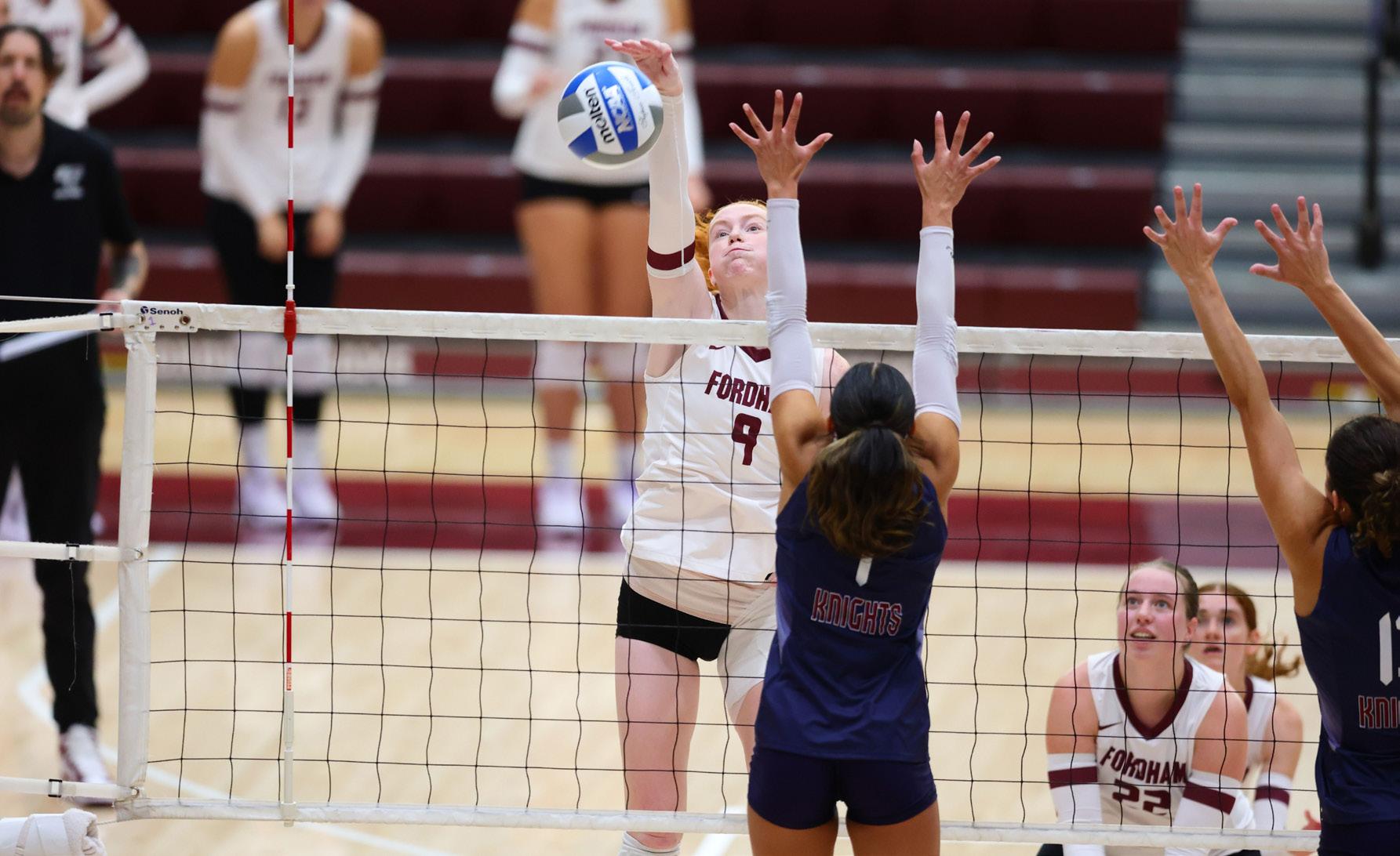
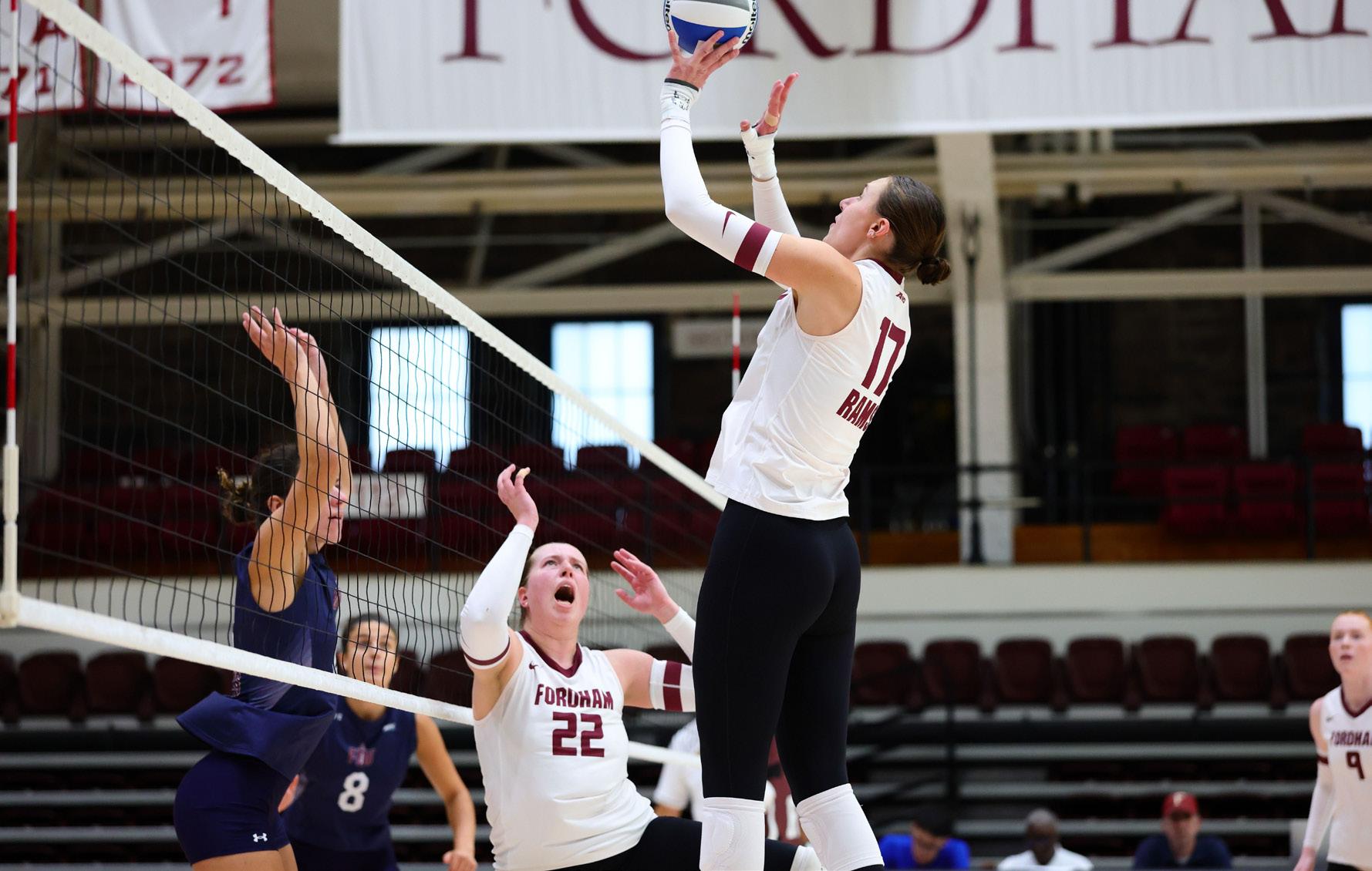
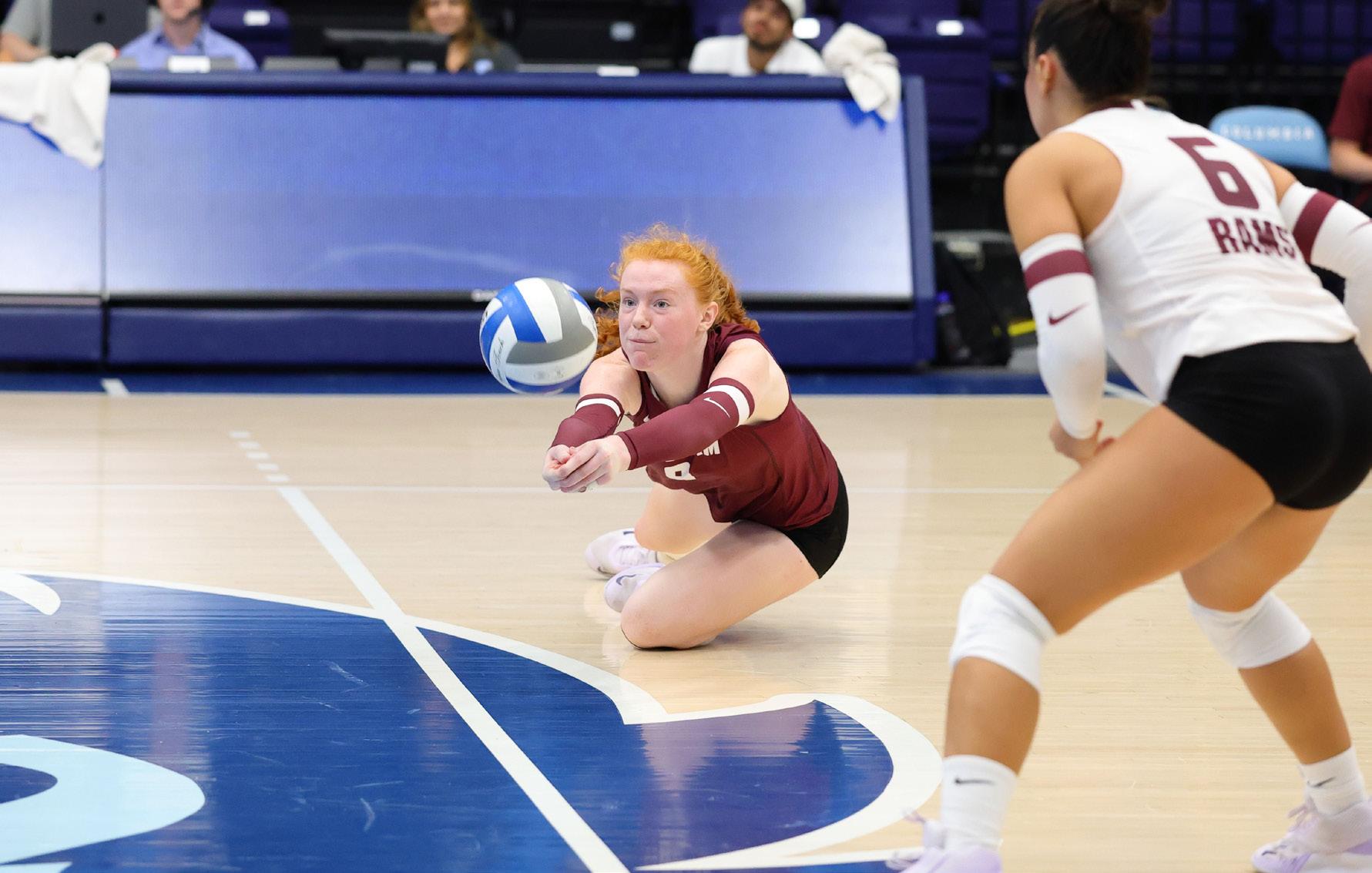
each other after a bad loss. Holderied described how the team checks in with one another after a loss.
“Recognizing the good things that people have done … Everyone is working so hard despite the loss,” Holderied said. “Making sure teammates are still feeling good about themselves.”
The team makes it important to focus on the effort they put into the games and practices. They separate their good play from their mistakes, which allows them to work on their weaknesses and grow.
“You can’t be amazing every single game. Every single person is going to have peaks and valleys and it is important to recognize that that is okay,” Brown said. “You cannot be perfect all the time.”
The team embraces their mistakes because they are such great opportunities to learn from, Holderied said.
The Rams have had an immense amount of success so far, even though it is only 14 games into the season. Their national ranking as a team has fluctuated in blocks per set. As of
Oct. 7, they were demoted from No. 1 in the nation in blocks per set to No. 3, as a result of games played through Oct. 5. Utah Valley University replaced Fordham in the No. 1 spot and Auburn University now sits at no. 2. The margin is small, with Auburn just 0.03 blocks per set ahead of the Rams.
Next, the Rams will face off against the University of Rhode Island Rams on Oct. 8 in the Rose Hill Gym. Over the weekend, they will play two games against George Washington University, also at home.
Affordability is the Name of the Game
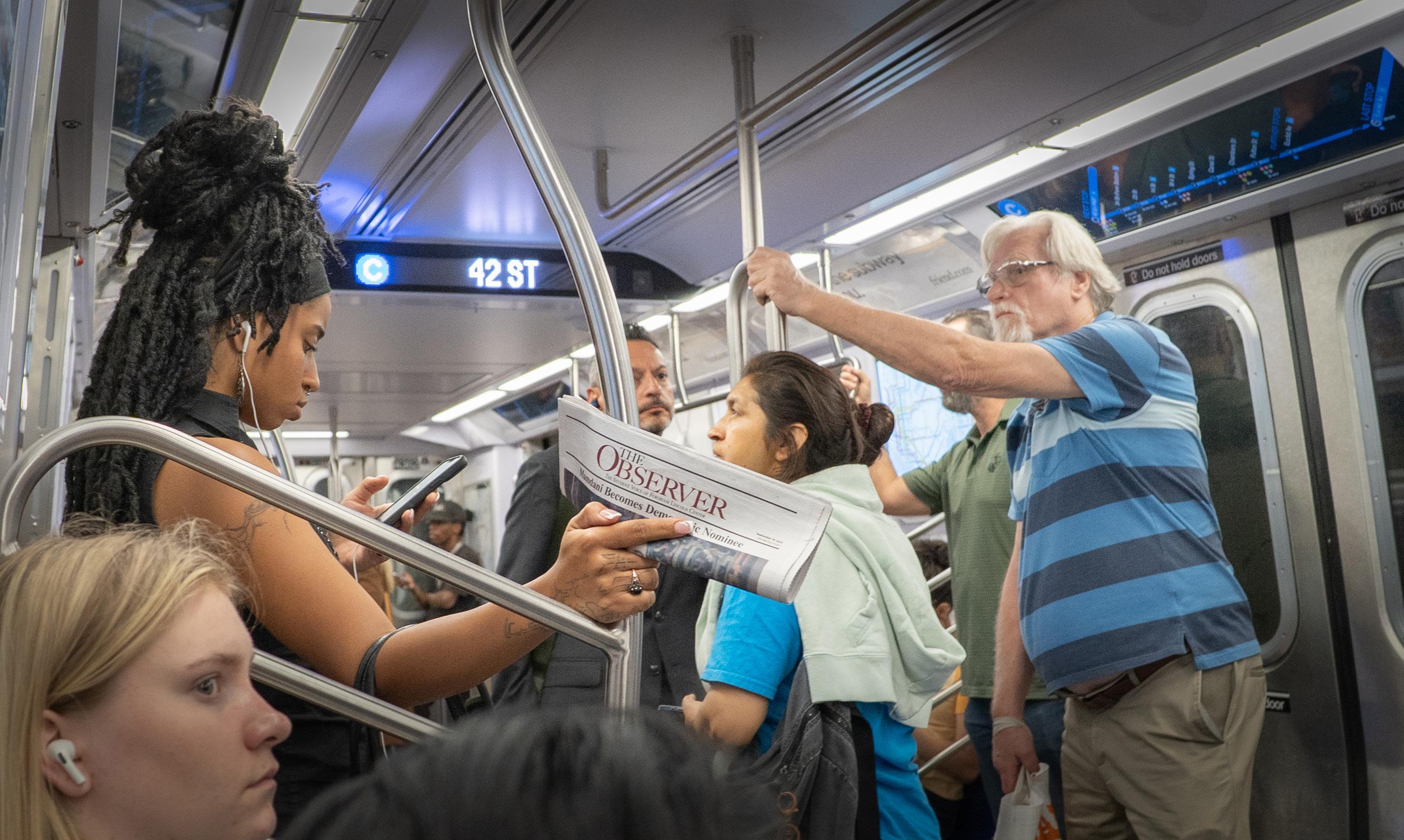
By SOPHIA SCHREIBER & IKMA INUSAH
Contributing Writer & Features Editor
Jeshua Daniel Jimenez is a native of the Bronx and a commuter student at Fordham. He starts his days around 7 a.m. He begins his 45-minute commute each morning by taking the 2 train to enter Manhattan and transfers to the 1 train at the 96th Street Station. He then gets off at 59th Street and Columbus Avenue, as many Fordham commuters do, and heads to his first class.
Jimenez, Fordham College at Lincoln Center (FCLC) ’28, is among the 40% of full-time commuter undergraduate students at the Fordham Lincoln Center campus. These students travel to campus, usually through the subway or on buses, rack ing up fare charges. If Jimenez were to take the subway twice, five days a week, at the current price of $2.90, he would spend $116 a month on transportation. Additionally, this year on Sept. 30, the Metropolitan Transportation Authority (MTA) board approved an increase in transit fares, with the subway fares going from $2.90 to $3 and the MTA express bus from $7 to $7.25, officially in effect January 2026. These fare increases impact transportation methods, making commuters’ lives more expensive as affordability is a concern for many. The New York City mayoral election is coming to a close as Election Day approaches on Nov. 4. Democratic Party nominee
Zohran Mamdani is focused on affordability with his campaign. Mamdani is not alone; his opponents, Curtis Sliwa and Andrew Cuomo, have also recognized that affordability is the primary concern of this mayoral election cycle.
The Mamdani campaign has offered a multi-faceted approach to the issue of affordability in the city. The plan includes city-owned grocery stores, fare-free buses and rent freezes for rentstabilized apartments.
In an interview for The Nation, Mamdani reiterated his commitment to his affordability plan.
touts affordability as a main concern. Cuomo’s campaign pledges to increase the supply of affordable housing, expand access to affordable healthcare and make transportation more affordable.
“New York City faces a crisis of affordability. Our City has always been expensive, but today it is rapidly becom ing unaffordable for millions of hard-working New Yorkers at all income levels,” Cuomo’s campaign website states.
Curtis Sliwa, the Republi can candidate for mayor, has also included affordability as a priority for his campaign, alongside his primary platform on improving public safety. In order to provide more affordable housing, Sliwa pledges to change zoning laws, restore empty rent-controlled apartments and focus on small landlords. On his campaign website, he also proposes tax rebates for homeowners and “all NYC resident commuters, including public transit users and drivers impacted by congestion pricing.”

“If they vote for me, they are voting for a rent freeze, they are voting for free buses, they are voting for universal childcare and city-run grocery stories with guaranteed lower prices,” Mamdani said. “That’s what I want to be held accountable to as soon as I am the mayor of New York City.”
Rival candidate Andrew Cuomo, the former governor of New York running on an independent party line, also
“It was a really great experience to be on campus — being closer, not having to commute. I just found that it wasn’t worth the price of the dorm,”
Janno Lieber defended the price changes in a press release published by the MTA.
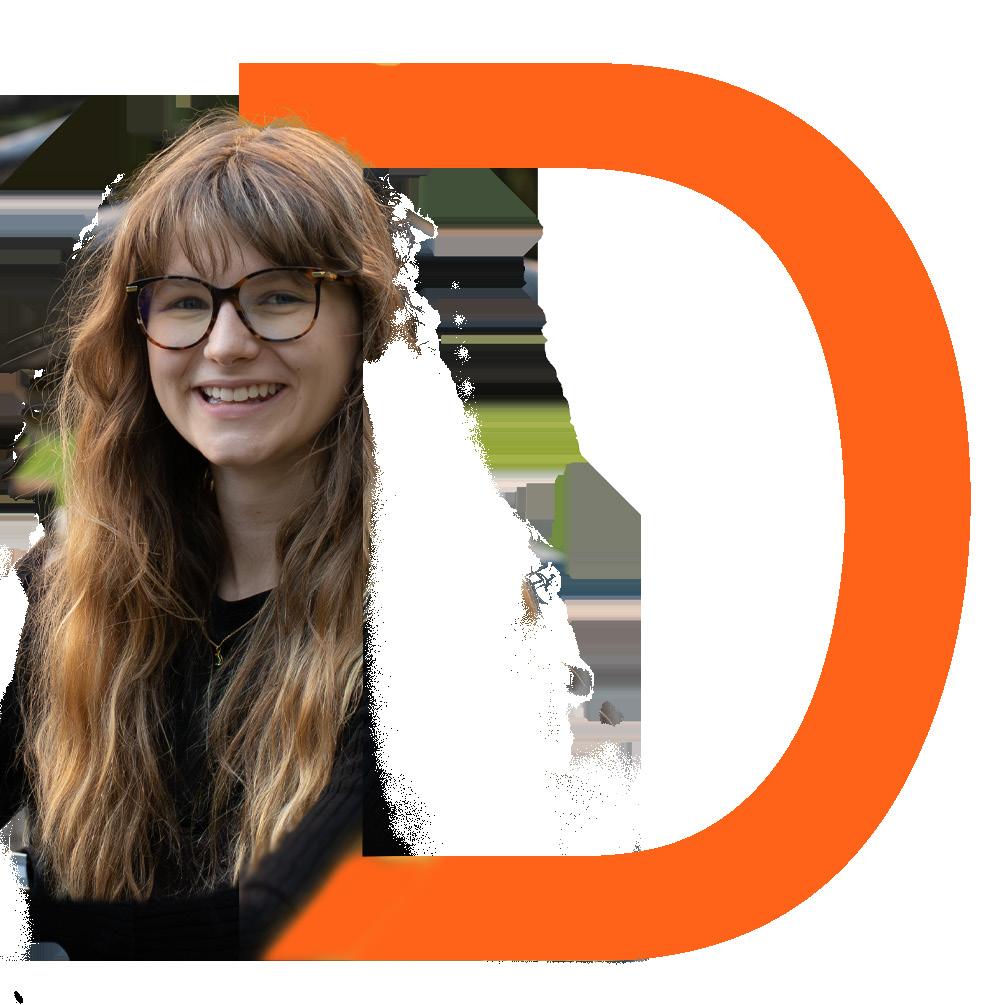
Sliwa will “focus on revitalizing existing spaces, supporting small landlords, and protect ing middle-class fam ilies from being priced out of their own neighbor hoods,” according to his campaign website.
With affordability on every New Yorker’s mind, many stu dents are considering the eco nomic viability of staying in a dorm versus commuting from home. Isabella Persaud, FCLC ’26, lives in a house with her parents in North Jersey and has a one-and-a-half-hour commute each morning.
Persaud commuted her first year, lived in McMahon Hall her sophomore year, and has commuted for the last two years.
The MTA board met on Sept. 30 to approve increases to the MTA, Long Island Rail Road (LIRR) and Metro-North fares that will go into effect Jan. 1, 2026. The board also made adjustments to certain propos-
“New Yorkers spend less on transportation than people in the rest of the country, and we’re determined to keep it that way,” Lieber said. “The modest fare increases approved today — which are below the rate of inflation — prioritize value for frequent riders and families while maintaining the MTA’s bottom line.” Even though the MTA board voted 11-0 on the price increases, board members appointed from seven local counties, such as Dutchess County, are not celebrating the decision to raise prices for many of their constituents who travel to the city daily for work.
Melva M. Miller, a board member appointed by the gov-

balancing child care costs, rent, housing, all the other sorts of affordability, utilities and other rising costs living in New York City, that can drive them into impossible choices.”
Another commuter student, Leslie Grullon, Fordham Graduate School of Arts and Sciences ’25, is from the Bronx. She takes the subway to campus from her place of work and also noticed an increase in fare cost.
“It used to be cheaper for sure,” she said, “I remember when it was $2.50, and I think now we are at $2.90.”
“ Tution here isn’t cheap ... Having free transportation, I would say it would be a benefit for sure. ”
Sciences ’25
Tabitha Franzetti, Fordham Law School ’28, has lived in New York all her life and was an undergraduate at NYU. She has continued to live off-campus while attending law school at Fordham. To help her pay her rent at her apartment in Kips Bay, Franzetti has a 529 plan, an investment account meant for college savings. Although her plan will run out next year, Franzetti still finds it more financially beneficial to live in her apartment.
“I found that it’s a lot, in my opinion it’s cheaper to live off, I mean, at least at NYU, it was cheaper to live off campus,” she said.
Franzetti splits her rent of $3,600 with her freshman year roommate and wouldn’t trade it for campus life.
“I like to be able to leave law school at the end of the day,” she said, “There’s a lot, it can get very taxing, and so it’s nice to have separation between church and state and be able to just leave at the end of the day … I like where I live.”
Rent and transportation fees are a consistent cost for commuter students and New York City residents alike. Leading mayoral candidates Mamdani and Cuomo are aware of these financial burdens and have proposed plans to combat New Yorkers’ transportation burdens.
Mamdani intends to implement a free bus plan that will eliminate fares for all bus routes in the five boroughs. He also intends to build more bus lanes to allow for a quicker ride, expand bus queue jump signals (specific traffic lights that give buses a head start at intersections) and dedicate loading zones to prevent double parking.
There was a free bus trial that ran across all five boroughs, specif

Bx18A/B, B60, M116, Q4 and S46/96 of NYC for a year from 2023 to 2024. The MTA shared the results of the trial, which showed only a slight increase in bus ridership. The MTA stated that its “foregone revenue and related costs amounted to more than $16.5 million in losses during the pilot period.” The buses also did not run faster — in fact, their average trip times slowed during the free fare trial. In the end, the trial showed mixed results of free fares for MTA buses.
Despite the varied outcomes of a farefree bus system, Grullon believes it would be helpful with
direction. Cuomo’s plan would change guidelines to allow for more participation in the Fair Fares program. The Fair Fares program provides a 50% discount on subway and eligible bus fares for New York residents with low incomes. The Fair Fares website, nyc.gov/ site/fairfares, contains more information on how to qualify for the program.
“ I am financially supporting myself ... But unfortunately, the government tends to see me as supported by my parents, even though I’m not. ”

Staten Island riders and workers alike,” Cassella said. With Cuomo’s plan to expand Fair Fares, commuter students would have the possibility of cheaper transportation fares; the only problem, for some students, is the eligibility requirements. This is the dilemma facing Fordham commuter student Isabela Hill, FCLC ’26, as she likes the idea of a discount but possibly wouldn’t qualify for the program.
“I am financially supporting myself,” she said. “But unfortunately, the government tends to see me as supported by my parents, even though I’m not.”
Hill lives independently of her parents in Brooklyn and pays rent on an apartment she shares with her boyfriend. They pay $1,600 a month.
For now, commuter students still have to pay for their transportation. Commuters often remain on campus because they do not have time to go back home between classes.
Jimenez stated he often stays on campus from 8:30 a.m. to 9 p.m. When asked if the lengthy commute and not being able to get home quickly was annoying or inconvenient, he was quick to answer.
“No,” Jimenez said. “I got used to it. It’s not bad,” he said. Jimenez also stated that he plans to attend law school in the city, and living with his mom is the best option to plan for that.
“I want to go to law school, so I don’t want to have to take out loans to dorm or have my parents pay for dorming. Whereas if I can just commute and then save up for law school, it’s easier,” he said. Jimenez said that in his
Isabela Hill, FCLC ’26
Cuomo’s affordable transit plan received the support and endorsement of the Amalgamated Transit Union (ATU) Local 726 and the ATU of New York State Legislative Conference Board during a rally on Staten Island. ATU Local 726 represents Staten Island’s bus operators, mechanics and transit workers. Their goal is to maintain a fair, safe and smooth running transportation in the boroughs for both the riders and the workers.
They opposed Mamdani’s plan for free buses because of its sim ilarity to the failed $50 million failed free bus experi ment that occurred in Kansas City in 2020, which ended in 2024. ATU stands with Cuomo in opposi tion to Mamdani’s plans.
Daniel Casella, president of the ATU Local 726 and chair of the ATU New York State Legisla tive Conference Board, spoke to The New York Post about the Cuomo plan. Casella supports his plan, as he sees Cuomo as a considerate candidate for the riders and workers of the transportation system.
“Cuomo has always rec ognized the unique chal lenges facing our borough’s transit system and is one of the rare elected officials to actu ally deliver for
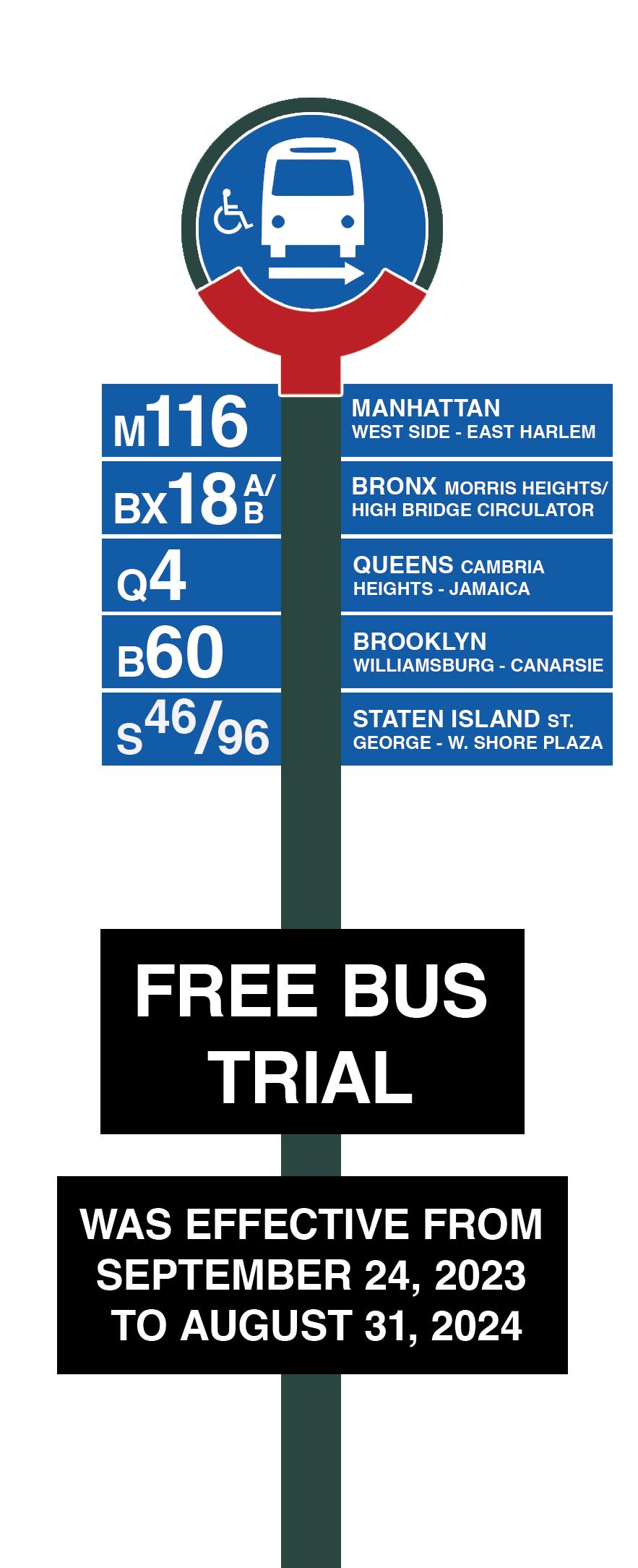
Opinions
What Southern Hospitality Conceals
How good manners disguise social surveillance and reinforce gender norms

MATTHEW FARWELL Contributing Writer
While seemingly innocuous, Southern hospitality acts as a surveillance tool which enforces rigid gender norms. As a Fordham student raised in the South, I’ve had to reevaluate these expectations since moving to New York.
I knew I would feel culture shock. Experiencing my first moments in New York City after arriving from a small town in Central Texas was bound to generate a sense of bewilderment. This shock, however, was not due to the abundance of healthy food options or the absence of Confederate flags on neighbors’ doors. By the end of my first week here, I called my mom, frantically repeating four words: “Nobody looks at me.”
Interactions in my small town, especially with strangers, follow an unspoken set of rules. These moments unfailingly include a smile, a mutual nod and an ad-lib along the lines of, “How ya doin’?” Whether you’re grocery shopping, conversing with a waitress or walking your dog through your neighborhood, there’s a sense of community formed through these small gestures, all rooted in the cultural norm known as “Southern hospitality.”
Southern hospitality is a defining characteristic of the South, marked by ever-present door-holding, shared meals with neighbors and endearing, unhurried conversations. I grew to love the welcoming phenomenon, except when I’d awkwardly stand beside my dad as he spent 30 minutes talking to a longtime friend he found in a Walmart. Yet after a month in New York City, I’ve recognized an undercurrent that also flows through the veins of the South, inseparable from the charm of Southern hospitality: surveillance.
The constant greetings reveal how everyone is acutely aware of one another. Beyond elderly women taking every opportunity to call someone “darling” with open arms, there exists an understanding that one has a role to play, and that role cannot impede on the long-established way of upholding traditional values or else they’ll be faced with disdain and mockery. In a sense, everyone is always watching.
Through this consistent monitoring, I’ve come to believe that the seemingly innocuous rituals of Southern hospitality conceal social pressures that reinforce conformity, uphold gender norms and create an environment where men, in particular, avoid any expression that could be read as feminine.
In the midst of this surveillance, every choice someone makes seems to be open to public scrutiny. In my sophomore year, I ditched my olive tones and silver rings for gray hoodies and sweatpants to avoid any more attention than I already had. I’d find myself turning down Taylor Swift in a drive-thru or curating specific playlists with enough rap artists so acquaintances wouldn’t judge me in the car for having “basic music taste.”
This feeling of surveillance also infiltrated my social life. Despite having a majority of female friends in high school, I actively sought out male friendships, as I felt it validated an appearance of masculinity within me. In my first year of high school, my close friends described me as animated and constantly talking with my hands, while my soccer teammates claimed I was “sarcastic and dry.” There was an obvious disconnect between the expressive, authentic version of myself in comparison to a more reserved one.
These repressive actions that diminished my distinctiveness weren’t just reserved for me. They were present in every boy around me.
I can recall countless times when guys would subconsciously cross their legs in a “ladylike” manner, then quickly uncross once they realized they might appear too feminine. The


restricted amount of expression allowed for only a slight amount of individuality.
If an aesthetic was socially allowed, it was safe. No guy was looked down upon for wearing baggy jorts, oversized T-shirts and drinking a matcha from Starbucks (but only that, as a man cannot be publicly seen with a Starbucks strawberry açaí). A cropped shirt was cool until it began to look like a baby-tee.
As soon as someone veered too far into femininity, the hounds were released. This reprimanding wasn’t direct, but instead circulated through whispers and sideways glances, creating a small-town panopticon of sorts.
Owning a Stanley Cup, wearing makeup or painting your nails instantly marked you as “the gay one.” But this was never really about sexuality. It was about gender expression and about signaling to the community that you knew your role and wouldn’t stray from it.
There is an existing notion that sexuality immediately coincides with gender expression, but a boy who appears stereotypically feminine is more likely to face more negative reactions than a girl who adopts the traits of a “tomboy.”
Women who embrace masculinity are not looked down upon because they’re seen as aspiring to the dominant male standard. A feminine man’s behavior is seen as deviating from his prescribed gender norm, as masculinity is associated with strength and power.
Boys are trained not to love anything too openly. You can listen to female artists, but only the ones deemed acceptable: SZA’s heartbreak is cool; Taylor Swift’s is embarrassing. You can play the guitar and sing by yourself, but joining choir is a no-go. Caring about hygiene and appearance is allowed under the guise of “looksmaxxing,” a practice of maximizing one’s physical appearance, amplified by male incel spaces on social media.
Every action comes with a loophole — an attempt to show care while simultaneously withholding it.
And whenever someone dares to break the script, it’s always defended by the phrase, “It’s not in a gay way.”
Masculinity is a trait that is constantly hanging by a thread, needing to be proven. Every choice outside of that boundary requires an explanation.
In the South, hospitality and scrutiny coexist. The friendliness that fosters community also builds boundaries, subtly structuring how people, especially men, dress, talk and love.
After I got off the phone with my mom, exclaiming, “Nobody looks at me,” I began to envelop myself in the new culture. I discarded my instinct to meet every passerby’s eyes, to nod, to smile. This was very difficult at first, as I didn’t want to come off as inhospitable, but eventually, I felt that I was finally freed from the confines of surveillance.
Suddenly, my mornings weren’t filled with anxiety because my outfit was at risk of being judged. I began to not overthink if my voice sounded “manly” enough. A weight of ideals I both consciously and unconsciously pursued was lifted.
The more I stopped looking at people as they passed, the more I stopped caring about what they were doing, and realized they didn’t care what I was doing either. Over time, I realized that Southern hospitality can feel warm, but New York City anonymity feels freeing.
I don’t believe that Southern hospitality inherently carries malicious intent. The warm culture creates an unparalleled tight-knit connection, but there is still a slight performance that the niceness relies on. New York City, however, accepts indifference to one another, not emphasizing the need to analyze a stranger’s actions.
That doesn’t mean I think New Yorkers are inherently cold. There’s simply a different kind of kindness here that doesn’t require a front of “niceness.” There’s a kindness rooted in liberation. This liberation exists in pure authenticity. There isn’t a need to hide away from myself in such a diverse city that prides itself on acceptance of all identities. Here, I can wear a Taylor Swift hoodie and cross my legs without a second thought. The only person looking at me is myself.

IAN ROGERS Contributing Writer
As the days get longer, so does the list of trends that define them. In 2024, you couldn’t miss the “Brat” green smeared nationwide, enriching presidential campaigns and popularizing “messy girl” fashion. While this summer was hard to pin to just one sweeping trend, its many current affairs pointed towards one overarching theme — authenticity.
We’re stepping away from the reservedness of nonchalance and stepping into a new world shaped by honesty and vulnerability.
The epidemic of nonchalance has been in full swing over the past year — a trend built on appearing careless and detached to come across as cool. However, users online, myself included, have started to crave expression and self-possession. We’re stepping away from the reservedness of nonchalance and stepping into a new world shaped by honesty and vulnerability.
From the start of season seven of Love Island USA, fans criticized the islanders for seemingly playing the game to win the cash prize instead of finding true love like in past seasons. This assumption stood true until day five, when Amaya “Papaya” Espinal entered the villa as her most genuine self. Her tears were frequent and her iconic phrases were endless, with watchers quickly labeling her as the “people’s princess” for her unwavering authenticity.
It is uncommon for a bombshell — a contestant who joins the show after the first episode — to win Love Island. However, America united to ensure that Espinal, the “sensitive gangster,” took home the $100,000 prize for her vulnerability on and off the screen. People empathized with her rough start, as many guys in the villa found her to be “too much.” She did not let this compromise the bold and genuine character she brought to the island. Fans admire her heart as much as her honesty.
Espinal left a profound impact on fans, encouraging them to stop molding themselves into an archetype that appears perfect but is impractical in reality. This impact was evident in the countless fan edits, which
The Death of Nonchalance
The era of effortless detachment is over; authenticity is cool again
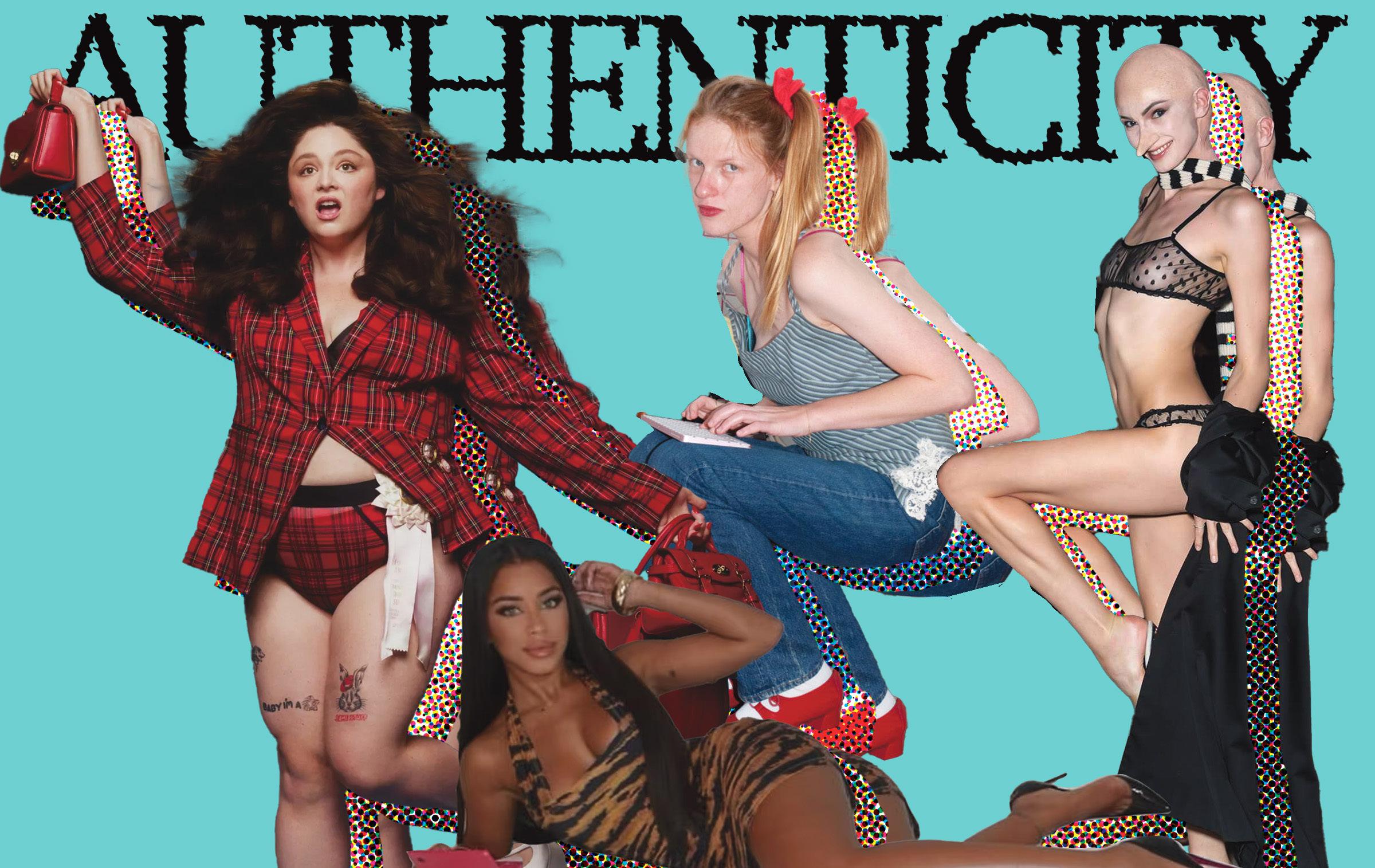
garnered millions of likes and thousands of comments, emphasizing her remarkable ability to stay true despite being torn down.
Women risk being branded as “dramatic” the second they show an inch of depth.
But when there’s honesty, there’s judgment. For the many people who praised Espinal for her vulnerability, there were just as many who found her tears and phrases annoying or attention-seeking. Unfortunately, this criticism is also equally common outside the villa. Women risk being branded as “dramatic” the second they show an inch of depth. In the midst of nonchalance, it was refreshing for viewers to see someone like Espinal being subject to these criticisms from men in the villa, or haters after she left, while still refusing to change who she is.
Stepping away from television and into the music industry, another bombshell climbed the charts this summer: Audrey Hobert. She dropped her firstever single on May 9 and, by the season’s end, had released an album. She’s now drawing over two million monthly listeners

on Spotify, thanks to her brutally honest and catchy lyricism. If her name sounds familiar, you might know her as Gracie Abrams’ best friend who helped write hit songs like “Risk” and “That’s So True.”
Hobert’s music is the antithesis of nonchalance, defined by caring too much about everything. Fans resonated with her natural ability to make even the smallest moments in life seem monumental. Her lyrics capture the realities no one wants to brag about, like the embarrassment of taking “thirst traps” or the Uber back from a failed night out. Her authenticity comes from her ease in leaving nothing for the imagination, refusing to be embarrassed because, as her amassed fan base shows, she’s not the only one who feels this way. Her music persona is not just a gimmick; her lyrics mirror her real-life composure in concerts, slightly awkward but boldly raw.
Her fearlessness to be perceived as “chalant” motivates listeners to do the same, knowing we are not the only ones.
Hobert pairs songs like “Sue Me” with her carefree dancing as if none of her fans were watching. On TikTok, these listeners embody her stiff movements of improvised choreography, united in their blitheness. Hobert knows we’ve all shown up to a function out of fear of missing out, only to realize you miss your bed, so she puts it into words for us. Her fearlessness to be perceived as “chalant” motivates listeners to do the same, knowing we are not the only ones.
While Hobert captivated listeners with her candid storytelling, Alex Consani and Meg Stalter have done the same in their respective spheres of influence: modeling and Hollywood. Consani established her social media presence in 2020 with her unapologetic and quirky personality, which soon gained mainstream recognition as she
started modeling for big agencies post-pandemic.
Of course, not everyone is convinced by this new rush of sincerity. For every fan clapping, there’s a critic rolling their eyes.
Consani frequently films skits backstage at fashion shows and other A-list events, breaking the common notion that models lack personality. Upon first glance of her on a runway, you’d never expect her TikToks of public self-sabotage. Whether she’s yelling on the subway or singing on the street, she’s always drawing attention to herself, good or bad. Her videos radiate a disregard for the cool, calm composure typically associated with the modeling world.
Comparably, this summer, Stalter has been everywhere, across talk shows and red carpets, using her dry and awkward humor to charm audiences. The title of her new show, “Too Much,” captures her essence perfectly. She dressed as a “coffee cup” for this year’s MTV Video Music Awards, and wore a shirt with her own face while appearing as a guest on “The Late
Show with Stephen Colbert.” She began as a comedian and built her platform on exaggerated yet relatable awkwardness, all while racking up hilariously cringe-worthy clips in the press. Although exaggerated at times, her ability to be her truest self — no matter the audience — has deeply resonated with fans. Of course, not everyone is convinced by this new rush of sincerity. For every fan clapping, there’s a critic rolling their eyes. Some find Hobert’s music to be “painfully annoying,” or say her songs are “not as authentic as people think.” Others call Consani’s off-putting aura “performative.” Yet, criticism is a price to pay when staying true to oneself.
Caring is back. It’s no accident that audiences are rallying behind the honest and real. This wave of influence shows how much people are craving authenticity, while growing increasingly apathetic to nonchalance. The signs are everywhere — the lyrics you gravitate towards, a clip of Consani or Stalter flaunting their personal brand`s, or voting for Amaya Papaya on Love Island USA. There is a cultural craving for the unpolished in a world of strictly curated feeds. We are flocking to the chaos and messiness that remind us of ourselves and our realities: unplanned, over the top and imperfect.


CAILEY KOCH Contributing Writer
Over the past few months, the masterminds behind the scenes of some of Broadway’s biggest productions have been making some questionable and harmful casting decisions. These choices have sparked negative discourse within the respective fan bases of these shows, as well as within the broader Broadway community. While “Cabaret” and “Maybe Happy Ending” both made headlines recently for their controversial castings of Billy Porter and Andrew Barth Feldman, respectively, insufficient attention has been paid to the recasting of Ponyboy Curtis in “The Outsiders.”
In early July of this year, it was announced that the show’s leading man, Brody Grant, would be making his departure on Sept. 21, necessitating a search for a replacement. For the fans who had already been mourning their star, the news of Grant’s successor only made things worse.
Prior to Grant leaving “The Outsiders,” there were two understudies for the role of Ponyboy. One of them was Josh Strobl, winner of the 2016 Jimmy Awards and a former universal understudy for “Dear Evan Hansen.” Instead of Strobl, the casting crew chose to promote Trevor Wayne, the main understudy for Ponyboy. Considering the team behind the show had announced that they were searching for future Broadway replacements earlier this year, it came as a shock that Grant’s replacement was not a new performer.
Much like before, the team behind “The Outsiders” seemed to completely ignore the commotion, hiding or deleting comments that went against their new golden boy.
When word got out that Wayne was taking over on July 24, the response was immediate and critical, and rightfully so. One Instagram user, @trlponyboy, made a call-out post about the actor, which included several screenshots of Instagram posts Wayne had liked. While it is unknown when he liked them, the likes still remained on the posts. Every one of them was disturbing, with many of them targeting the transgender community, the Black community, women and children. The images were framed as memes from an account full of “dark humor.” One of the posts depicted three coffins draped in American flags, with the caption, “Which one is Trans?” The meme included a screenshot of a reply that read, “Hopefully all of them.” Another grotesquely joked about preying on underage girls, disturbingly framing it as “early access” and “beta testing.” Despite these posts masquerading as humor, they all touched on extremely sensitive topics that I, as well as many others, believe should not be dismissed as jokes. It’s one thing if someone liked the posts in the past and owned up to that, or if there is any indication that the person liking the posts does not actually agree with their content. In the case of Wayne, however, neither of these things seemed to be true.
Curtain Call for Accountability
Audiences
are rallying against recent controversial Broadway casting

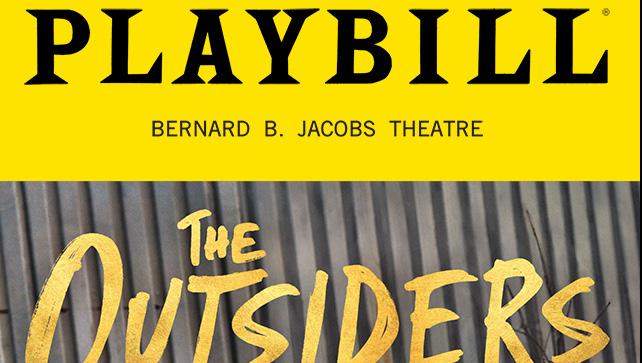
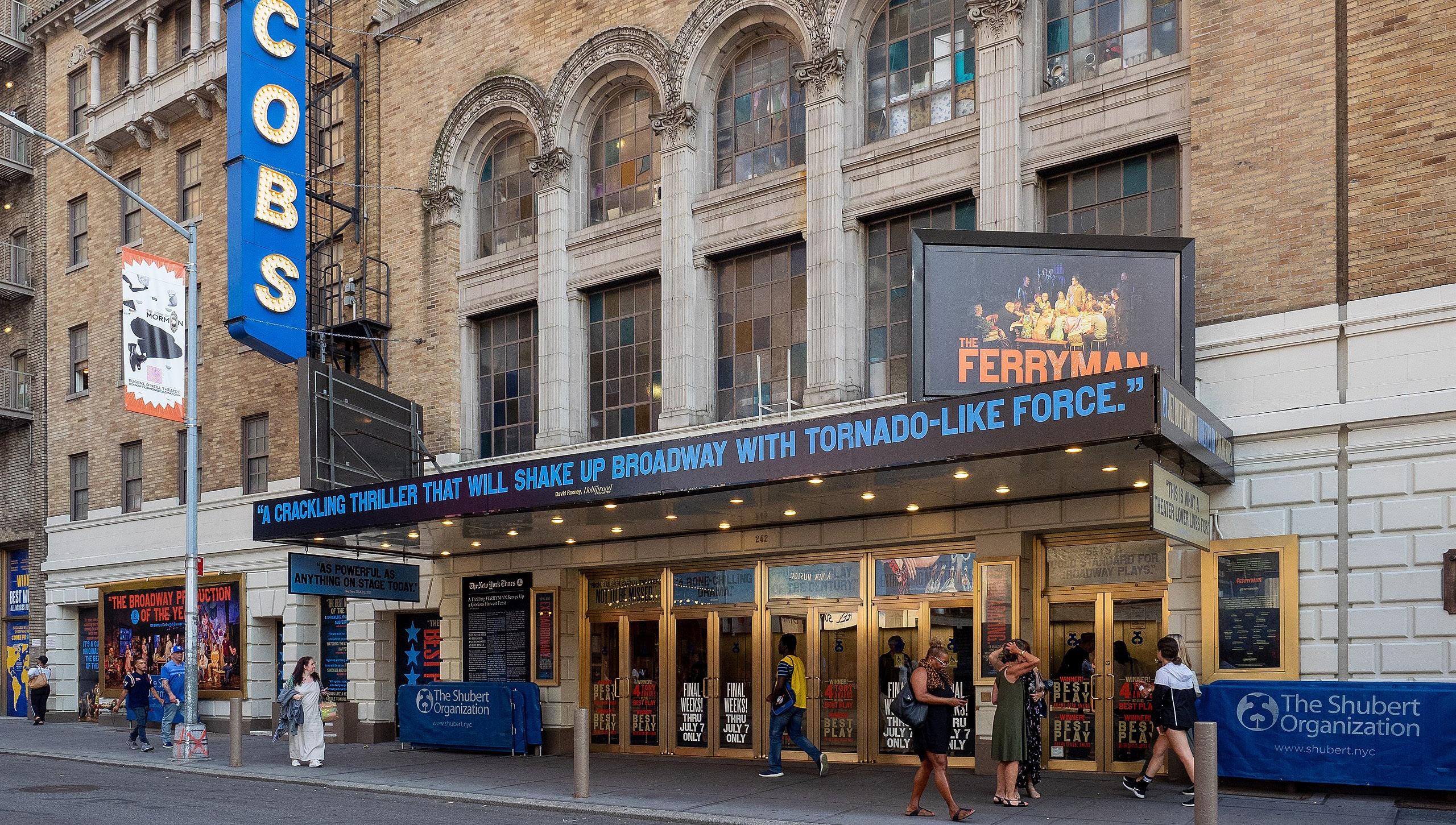
The post exposing Wayne spread like wildfire throughout the fandom, sparking widespread reposts and commentary. In the comments of @trlponyboy’s post, one user wrote, “This needs to be addressed ASAP.” Another said, “Guys, he shouldn’t be our new Ponyboy, he shouldn’t be allowed to perform let alone be the lead role on stage … personally, I’d be very uncomfortable if I see him on stage considering he’ll be performing with young women and in front of young women.” I myself was one of the people who reposted the call-out on my Instagram story, stating that I was disappointed in the decision and urging the team to take action. Despite all of this outrage from fans, the show’s team upheld their decision, and Wayne began performances as the new principal actor for Ponyboy on Sept. 23. Seven days before this,
on Sept. 16, @trlponyboy shared another post as a last-ditch effort to spread awareness about the actor. Unlike the previous post, this one included screenshots of comments from people who claimed they attended college with Wayne. One of these users wrote that he “never actually got a degree from (the University of Florida) for a reason,” while another flat out stated that he had assaulted one of their friends. For that reason, they were just as surprised by the news of the casting as fans were, if not more.
Wayne’s first day as Ponyboy was likely unforgettable for the young actor in more ways than one. Landing the lead role in a Broadway musical is the kind of milestone many theatre performers dream about, but alongside the excitement came a wave of negative comments on
Another recent incident involving the recasting of a role came about when the team behind “Maybe Happy Ending,” a musical that is centered around helper bots in Seoul, announced that Andrew Barth Feldman would be taking over as their male lead. Feldman, who is a white man, began performances as helper bot Oliver at the beginning of September, taking over for Darren Criss, who is Filipino.
Audiences took issue with the fact that, by having a white man portray a main character in a production set in Korea, the team was minimizing the Asian representation of the musical that had won them Tony Awards and earned them support from Asian Americans and Pacific Islanders.
Actor Constance Wu called Feldman out on her Instagram for taking the part. She said that they had spoken about it over the phone, but that ultimately she was “so disappointed with him.”
“It’s hard to keep speaking up when it feels like no one is listening anymore in this new era,” she said in the Instagram post.
When an actor or actress who is problematic and harmful is cast as a lead in a popular musical, it makes those within the communities the person has harmed feel unsafe and unsupported.
Despite the outrage from fans, the Instagram account for “Maybe Happy Ending” posted in defense of their casting decision.
“We wanted to write a show in which every role could be played by an Asian performer, but without the intention that the robot roles always would be,” the production said in an Instagram post.
In situations like these, where it seems as though all grievances are being overlooked by the people who have the most influence, I believe separating the art from the artist becomes complex. In my opinion, it is difficult to do so, especially in cases like the recast of “The Outsiders.”
When an actor or actress who is problematic and harmful is cast as a lead in a popular musical, it makes those within the communities the person has harmed feel unsafe and unsupported. I personally have decided to stop buying tickets to and listening to the album from “The Outsiders” until the Wayne situation is addressed.
promotional posts from the official Instagram account for “The Outsiders.” Numerous fans of the production rallied together in an attempt to raise awareness of the actor’s behavior yet again. Users such as myself took to their Instagram stories yet again, publishing paragraphs expressing their concerns and even proposing organized boycotts of the show. @trlponyboy began compiling people’s disturbing interactions with Wayne at the show’s stagedoor as well, keeping them anonymous, but spreading the general message that the actor should not be trusted as the lead in a show that so many young women attend. Much like before, the team behind “The Outsiders” seemed to completely ignore the commotion, hiding or deleting comments that went against their new golden boy.
It’s disheartening considering I was a diehard fan for over a year, but as a woman and a member of a community Wayne has actively targeted with his Instagram likes, I no longer feel the connection I once did to the show. This sort of behavior should not be tolerated in any production, which would mean conducting more extensive background checks. If something is not found initially, but is eventually brought up to those working on a production, there should be a plan in place on how to deal with these sorts of instances.
Whether this be the removal of a problematic performer or a thought-out acknowledgment of concerns, something should be done. All I can hope right now is that the cast and crew of “The Outsiders” come up with a satisfactory solution to their wrongdoings. Until then, unfortunately, they have lost me completely.
Arts & Culture
In a Dismal Job Market, There Is Hope for the Humanities
Long-ridiculed for their ‘impractical’ fields of study, humanities majors might come out on top
Most of my peers are likely familiar with internet jokes that make fun of humanities majors and the liberal arts, whether they register these jokes as harmful or not. It would be difficult to find a TikTok of anyone holding up their degree in a field such as gender studies, music theory, philosophy or creative writing without a string of comments making quips like “just put the fries in the bag, bro” — the punchline being that their academic passion is fruitless, as they will ultimately be unemployed or working minimum wage jobs. However, these jokes are not founded in truth.
This long-held belief that humanities and arts degrees have no benefit post-grad has led many a college first-year away from pursuing their passions, but is it anything more than a popular myth?
Data from a 2023 study by the Federal Reserve Bank of New York shows that humanities majors and STEM majors report similar levels of unemployment: Anthropology majors, physics majors and computer engineering majors have the highest level of unemployment at 9.4%, 7.8% and 7.5%, respectively. Computer science majors reported a 6.3% unemployment rate, and liberal arts majors reported a 5.3% unemployment rate. Interestingly, these internet jokes about unemployment never target computer science majors, despite the recent dearth of entry-level coding jobs.
In order to get the outlook on our own campus, I spoke with two Fordham staff members at the Career Center: Cole Chaloupka, the student engagement specialist here at Lincoln Center, and Allyson Blatz, the assistant director for student engagement at the Rose Hill campus. Both Chaloupka and Blatz work on Fordham’s programming and career development initiatives for students in the humanities.
Interestingly, these internet jokes about unemployment never target computer science majors, despite the recent dearth of entrylevel coding jobs.
Blatz said she observed distinctive strengths in students studying the arts and humanities.
“What’s really unique about humanities and liberal arts students is there is more of a focus on passion and impact,” she said. “I’ve seen students really channel that passion into awesome personal projects.”
Fordham’s career center uses the eight principles of career readiness, outlined by
the National Association of Colleges and Employers, in a lot of their work with students. These eight principles are career and self-development, communication, critical thinking, equity and inclusion, leadership, professionalism, teamwork and technology. Both Blatz and Chaloupka mentioned that humanities majors frequently meet this criteria for career readiness, especially in their strong communication and critical thinking skills.
“We have employers come to Fordham’s campus all the time,” said Blatz. “They talk about how they value … collaboration, time management, communication, critical thinking; and these are skills that don’t all come from more technical or specialized degrees, so, for example, tech or business degrees. They come out of humanities majors.”
Right now, employers are looking for college graduates who possess skillsets that are often cultivated by humanities curriculums, yet so many humanities majors, myself included, have been conditioned to think that they have limited options when it comes to entry-level careers, or that teaching is one of their only bets at steady employment. While teaching can be a fulfilling and lucrative career, there is so much more out there for students holding humanities and arts degrees, and it is unrealistic for every humanities major to limit themselves to just one career path.
Chaloupka mentioned a “crisis in critical thinking” that is occurring in higher education right now due to the prevalence and overuse of generative artificial intelligence. Chaloupka argued that the humanities curriculum actually combats this decline in critical thought.
“The humanities is set up to encourage students to do these readings and think and ask questions,” Chaloupka said. “That is going to be so important to be able to counter some of this access to lazily figuring things out at our fingertips.”
Seneca Farhy, Fordham College at Rose Hill ’26 and a history major, said that she is strongly against the use of artificial intelligence in education largely because of her field of study.
“With the way that history has pushed me to think so critically, I just don’t like feeling like that is being taken away from me, or that I can cop out of thinking about things,” Farhy said.
Farhy has been spotlighted by Fordham for her accomplishments in historical research, namely a 10-week summer internship at The New York Historical where she worked on a Harlem Renaissance exhibition highlighting the leading role that Black and LGBTQ+ New Yorkers played in that movement. Farhy said that the skills she learned while studying history — critical thinking, knowledge of historical patterns, writing and reading comprehension — benefited her greatly during this internship.
“I feel like today, where everything wants to grab your attention in an instant, we are taught a lot of times what’s worth your attention and what is not,” Farhy said. “But I think that studying history has allowed me to slow down and get the full picture of things and ask questions. I feel like I was able to translate this into my job really well over the summer. It helped to be thorough
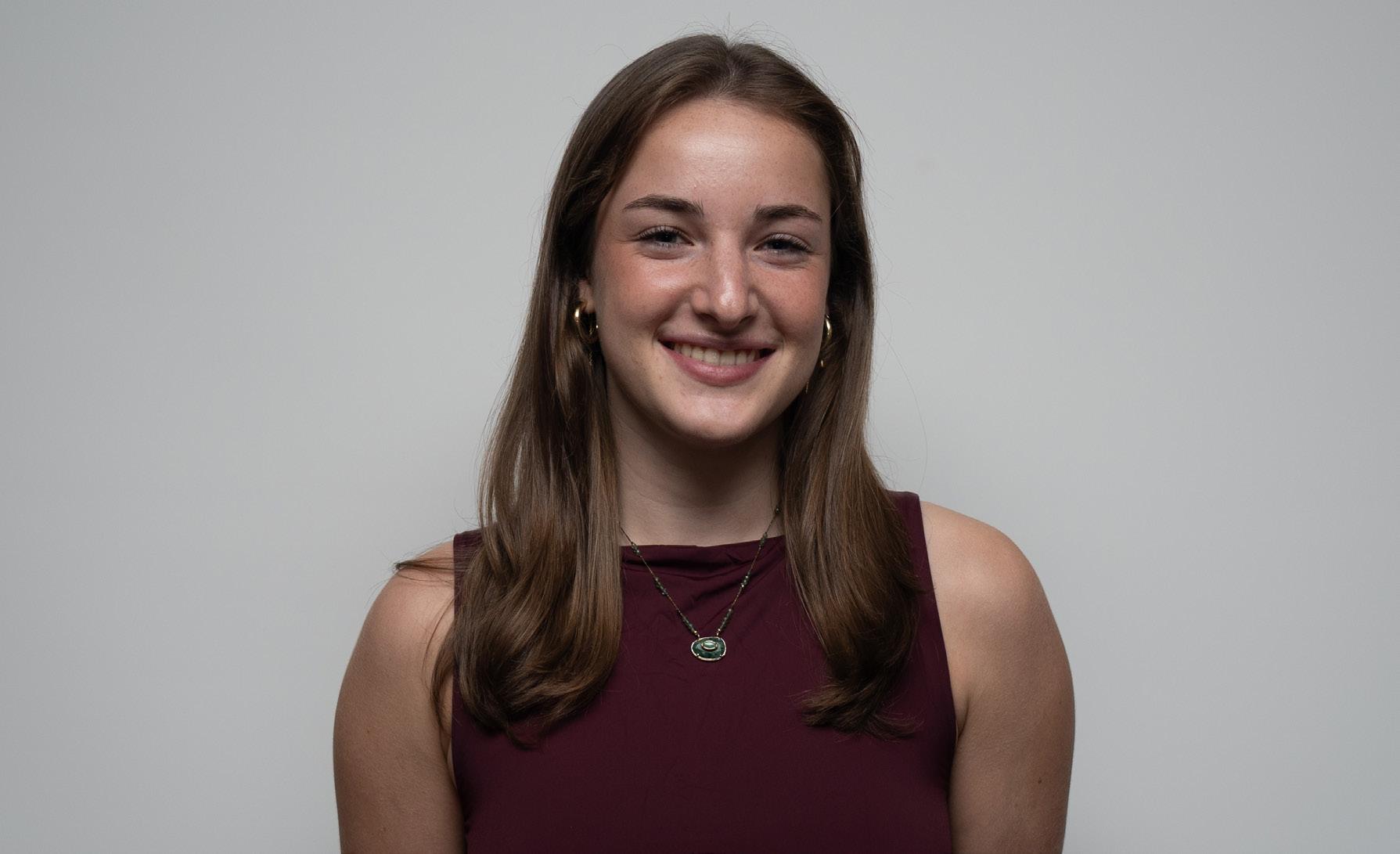
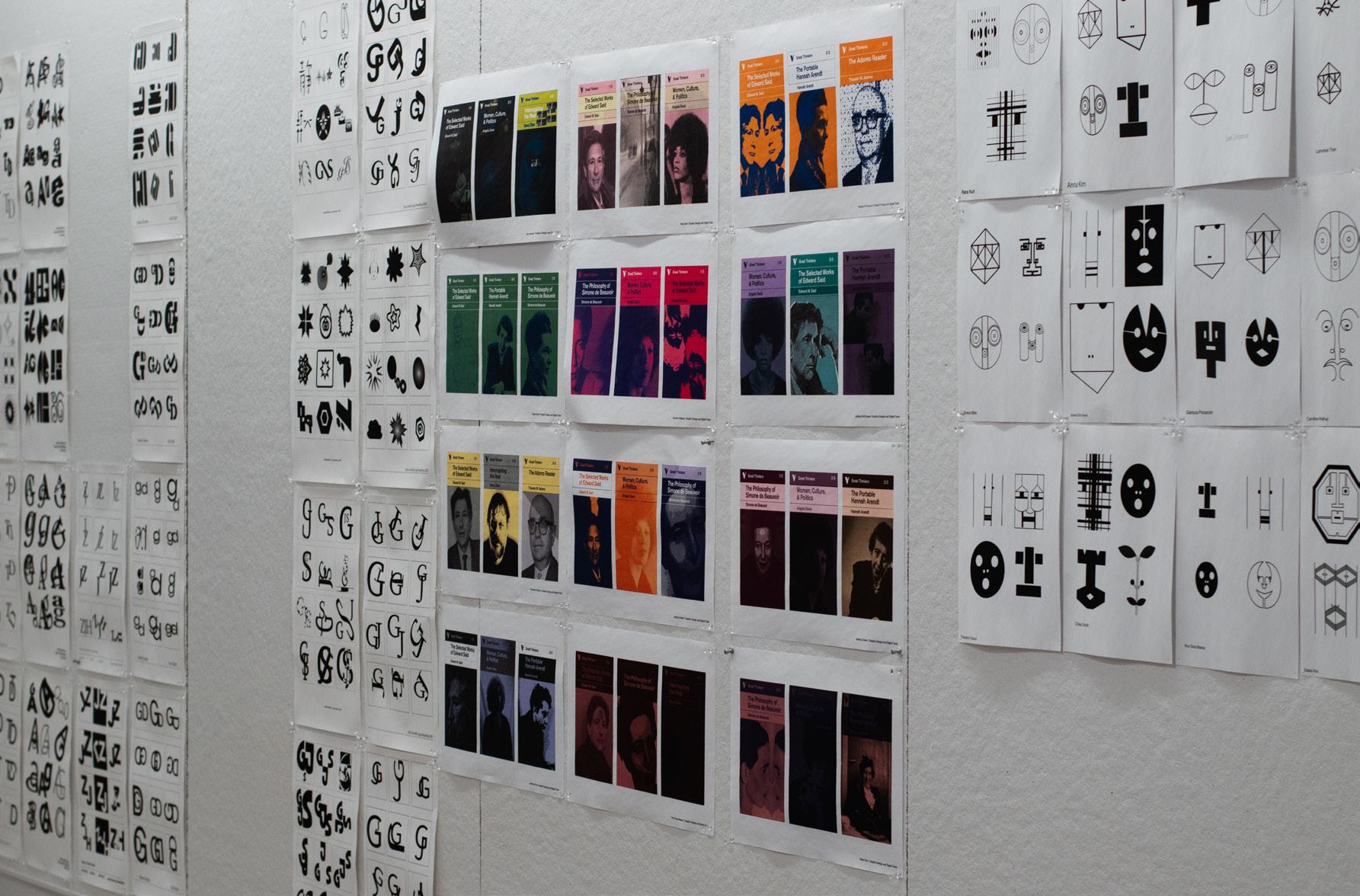
and to know that you can ask questions, and knowing what the right questions are to ask.”
“
What’s really unique about humanities and liberal arts students is there is more of a focus on passion and impact ... I’ve seen students really channel that passion into awesome personal projects.
”
Alyson Blatz, Asst. director
for students engagement
Farhy sees herself pursuing history in the future, whether that be in her free time or in her career, stating that she definitely sees herself spreading that love and passion for history to others in whatever way she can.
On a larger scale, college tuition is rising rapidly across the country, and the economy is looking bleak. Thus, many students view college not as an
intellectual endeavor, but rather a mandatory stepping stone between a high school diploma and a bachelor’s or master’s degree; personal interest in one’s major has become secondary to its average starting salary. Plus, the barrier of entry for jobs seems to be increasing, with a bachelor’s degree seen as the bare minimum, and extracurriculars, internship experience and LinkedIn holding significantly more weight. Simply holding a college degree in any field is not enough anymore for many graduates to secure entry-level jobs with satisfactory salaries, particularly here in New York City, where the cost of living is incredibly high. Education for the sake of education may be losing its value in our society, yet humanities and arts majors, against all odds, are able to apply their unique creative and academic skills in the workforce to find high-paying jobs. The National Humanities Alliance (NHA) published a recent article called “The Humanities Pathway to Career Success,” in which they reported that 78% of surveyed employers named critical thinking as a “very important” skill, while only 49% of employers reported recent graduates being “very prepared” in that area. The NHA
also reported in this article that humanities majors were statistically scoring higher than the average applicant on graduate school entrance exams across all fields of study.
American society, in many ways, insists that STEM is the future and places less value in the arts and humanities. While STEM is integral to technological advancements, those advancements must be carefully guided by human ethics. Art, music, literature, philosophy and history have always been at the center of human culture and human advancements, and, especially now, they are needed in the workforce. These fields of study are of critical importance in the age of generative artificial intelligence, where human creation is being steadily overtaken by technological innovation.
“I support pursuing careers in the humanities because, well, it’s in the word: It’s human, and it helps you connect to other people, and humans are easier to connect with than money,” Farhy said.
Before writing off a major in the humanities or arts as a waste of time and money, consider that it might just be your secret weapon when it comes to career success — now more than ever.
Writes, Camera, Action
Fordham’s John Stengel on writing and directing his upcoming play ‘Birdwatching’
By EMAAN EHTASHAM
Contributing Writer
John Stengel, Fordham College at Lincoln Center (FCLC) ’26, is the only student in Fordham’s Fall 2025 Studio Showcase to both write and direct the same play. “Birdwatching” explores the intersection between humanity and technology, highlighting responsibility over the creation and use of artificial intelligence (AI), and it all stems from Stengel’s personal experiences.
Growing up in Wilmington, Delaware, Stengel was always interested in theater. He starred in his preschool production of “Where the Wild Things Are” and continued his passion for community theater through high school. At Fordham, Tony Meneses, the former head of playwriting in the theater department, encouraged Stengel to apply for Fordham’s theatre program after his first year at Fordham.
“It’s been a blessing ever since that moment,” he said, reflecting back on the experience.
He views theater as a powerful outlet for his creative energy, and has given his all to his current project, “Birdwatching.”
The screenplay was born two years ago as a class assignment. The play follows Peter, a young Wall Street executive, as he moves into an apartment occupied by his AI fridge. Being lonely and in need of connection, Peter and the AI form a friendship that changes their worldviews. The play deals with questions of humanity and love, asking: What happens when our AI feels more human than us?
With the steady increase of the AI epidemic we currently face, the themes of the play have

only gotten more relevant since its inception.
“It’s about how responsible we are for the things we create,” Stengel said.
What once might have felt like speculative commentary now feels eerily close to everyday life.
For example, AI-generated products and marketing campaigns are now plastered across subway stations in the form of friendship necklace ads promising companionship through code. This growing normalization of artificial intimacy makes the play’s questions about human connection and authenticity resonate even more powerfully.
Stengel said that the friendship between the play’s main character, Peter, and the AI being, Bot, was inspired by his relationship with his younger sister.
“You don’t know how much you influence the other person
until you see it make an impact,” he said.
Stengel has experienced firsthand how something minuscule he expresses can be internalized by his younger sister and manifested in the way she acts or things she says without his realizing it.
While he was able to pull from his own circumstances to breathe life into his writing, he also gained new experiences through the creative process. This was especially prevalent when it came to figuring out the complications of being both the writer and director of the play. The writing aspect was a continuous process throughout the past two years, but when it came to balancing his creative work with directing, it called for more effort.
“Luckily, I’ve surrounded myself with a team that’s extremely confident and knows what they’re doing,” Stengel said.
By finding a good group of people who can take on responsibility and support him throughout the process, his stress was lifted. It allowed him to view the director role as an opportunity to hear others’ perspectives and creative ideas and then dictate the direction he believes would be best for the show.
“My assistant director Frida is an actor first, so she has this wonderful language that she uses with the actors,” Stengel said. “Oftentimes, I don’t understand a note she gives, then we implement it and it works.”
As for the writing process itself, Stengel managed to give the AI its own character in a meaningful way.
Stengel wanted to know: “What would it take for me to feel like a fridge was more human than a man?” The human qualities he drew on were things like humor
and the ability to learn, reflecting on what he knows about human beings and the values we carry.
Another part of this development was especially emphasizing the sibling-like relationship as opposed to a romantic one. Stengel referenced the 2013 movie “Her” about a man named Theodore and his blossoming relationship with an AI operating system. Instead of taking that route with “Birdwatching,” Stengel wanted to put a twist on the expected trope.
“I’m much more interested in that sort of sibling dynamic,” Stengel said. “What do we pass down to the people that grow up around us?”
It translates well if what I was able to see during a rehearsal is anything to go by. The dynamic between Cade Parker, FCLC ’26, and Eva Vila, FCLC ’28, is humorous as well as deep and meaningful. Parker’s character, Peter, teaches and mentors Vila’s character, Bot, while still maintaining fun banter.
“Birdwatching” contributes to the conversation about the detrimental effects of AI and modern-day technology in a nuanced way. Stengel does not want to warn people off AI altogether, but based on current headlines relating to AI use and its effect on people’s livelihoods, he does believe in promoting mindfulness.
“The play is trying to refocus the conversation to what is our responsibility in creating these (technologies),” he said. “Hopefully the audience recognizes that relationship … and understands their culpability in the way that they act.”
You can see “Birdwatching” in the Kehoe Studio Theatre from Oct. 9-11.
Luca Guadagnino Goes Cold in ‘After the Hunt’
The director’s latest psychological thriller trades warmth for severity, interrogating power, performance and moral ambiguity
By SOFIA LAJE Staff Writer
Luca Guadagnino is no stranger to the shocking and uncomfortable. After grabbing hold of the world’s attention last year with two stylistically bold features (“Queer” and “Challengers”), he returns with “After the Hunt,” a psychological thriller set within the halls of Yale University.
Following a sexual assault scandal, Alma (Julia Roberts), a philosophy professor, is faced with the dilemma of believing either her female student Maggie (Ayo Edebiri) or her close personal friend and fellow professor Hank (Andrew Garfield). The film meditates on generational tensions, academic optics and the cost of prestige.
“After The Hunt” premiered in North America on Sept. 26 as the opening film of the 63rd New York Film Festival. Following the screening, the cast and crew — including director Luca Guadagnino, screenwriter Nora Garrett, Julia Roberts, Andrew Garfield, Michael Stuhlbarg and Ayo Edebiri — gathered for a collegiate publication roundtable discussion.
The setting is a notable departure for Guadagnino. His usual warmth and texture is traded out for gothic architecture soaked in gray rain. Writer Nora Garrett explained that the architecture felt “both kind of oppressive and lofty,” as Yale “offers and promises a lot of privilege ... and then New Haven, the city that surrounds it, does not get to participate in that same level of privilege.” That atmosphere sets the ideal stage
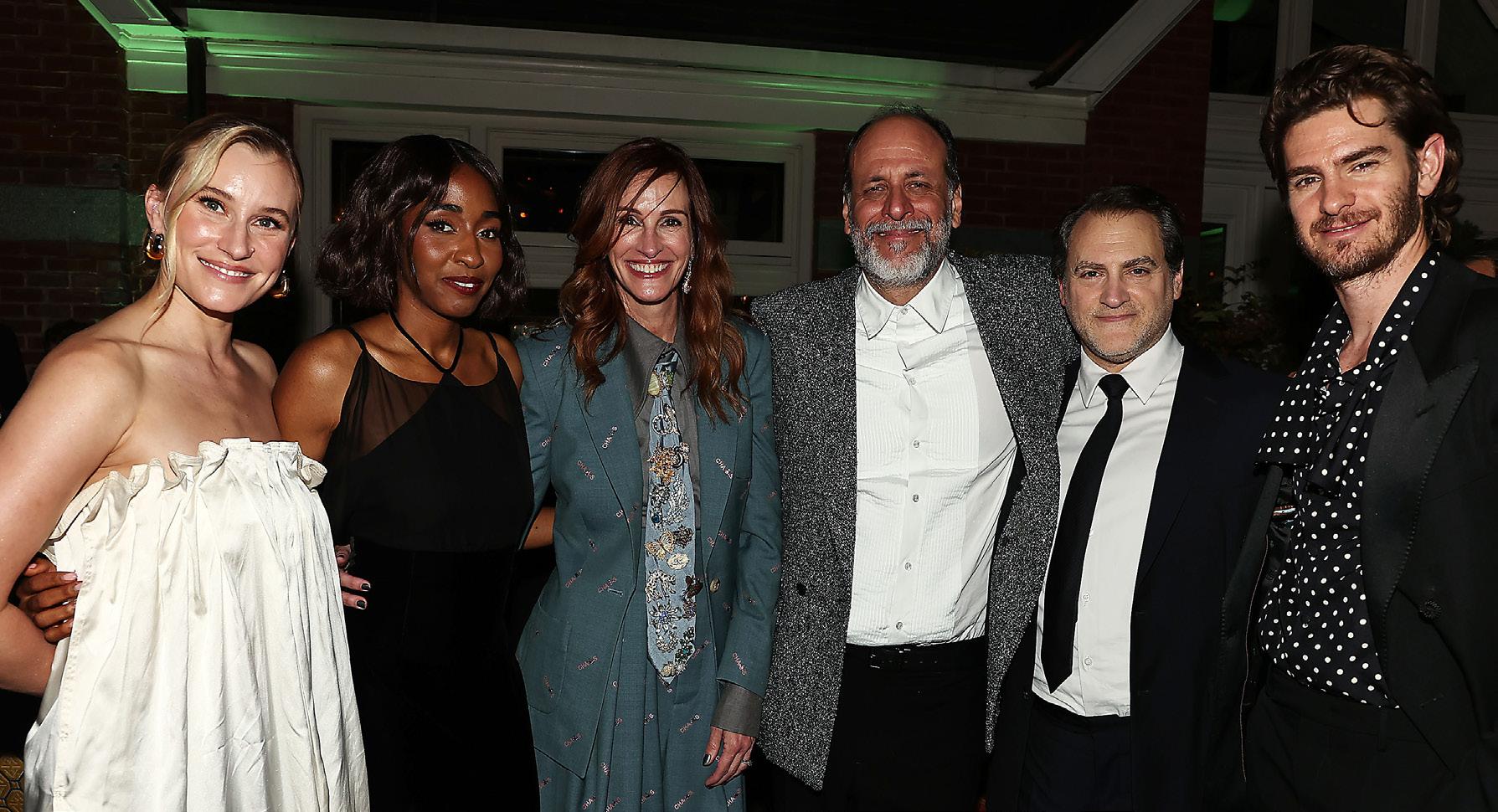
for a story about the institutional illusion of integrity. As the dean of the philosophy department states in the film, academia has become “the business of optics rather than substance.”
Alma’s mentorship of Maggie provides the film’s core tension. Andrew Garfield reflected on this dynamic during the roundtable: “Something about true mentorship has betrayal baked into it ... in order for the young to become an elder, there has to be something (that is) broken.” Garfield plays Hank, a morally ambiguous figure far from his usually earnest characters. Casting him in the role leverages the audience’s preconceptions, with his
long-standing reputation as Hollywood’s “nice guy” pushing viewers to doubt his guilt.
“It was scary,” he admitted, but credited Guadagnino’s directing in helping him take on the challenge.
“Luca does have a kind of imagination that not many directors afford themselves,” Garfield said. “He likes to see actors expand their own range and repertoire, and gives (them) an opportunity to do that.”
That sense of trust was demonstrated throughout the entire story. Michael Stuhlbarg, who plays Alma’s husband Frederik, noted, “We take the information that’s given to us and we shape lives from that. I’m not sure if
we’re seeking empathy, even if our characters are doing something disagreeable or that we might find disagreeable ... You take what you’re given and put it out there, and let the chips kind of fall where they may.”
There is a visible tension between the screenplay’s intellectual rigor and its emotional accessibility. The film is rich in ideas — mentorship as betrayal, the performance of power, generational tensions — but at times, those ideas feel more like talking points than lived experience.
Still, Garrett’s ambition is admirable. The screenplay asks difficult questions without offering easy answers, and its coldness feels
intentional, even if not always emotionally satisfying. Guadagnino’s strong visual language ultimately saves the film, elevating moments that might otherwise collapse under the weight of the abstract.
The focus on hands in “After the Hunt” is one of its most pointed visual choices. The film uses hands to signal power, intimacy, consent and guilt, often all at once. They become symbols of complicity and control, showing who holds power and who gives it away. In a story where much is left unsaid, hands reveal all.
Guadagnino shoots on film, emphasizing immediacy and weight.
“There’s intentionality (behind) everything from the art that’s hanging on the walls or a statue ... to what we’re doing with our hands,” Edebiri said. “It’s considered and in conversation.”
The score, composed by frequent Guadagnino collaborators Trent Reznor and Atticus Ross, is used sparingly, emphasizing pangs of emotion while adding to the pressured atmosphere. The film’s final moment cuts to black with the word “Cut!” — a sharp jolt that feels less like resolution and more like a reminder that everything you just saw was a performance.
As Guadagnino put it, in this film “intimacy is the breaking point ... the desire for the other is an appearance. The conflict with the other is the moment where finally, people get together.” “After the Hunt” lingers not on release, but on what remains unsaid.
Hamil-ten: Anniversary Updates on Broadway’s Biggest Shot
Raising a glass to the iconic show with special events, screenings, celebrity appearances and more
By LARA POPOVIC Copy Editor
Calling all musical theater lovers, history buffs and geeks — Aug. 6 marked the 10th anniversary of “Hamilton” on Broadway, and cast and fans alike have been nothing short of celebratory. So what did you miss? Let me catch you up to speed.
The audience welcomed Odom Jr. with roaring applause that lasted so long that he could not deliver his lines and even broke character, cracking a smile at his more-than-warm greeting.
Starting off with the most exciting news, the inimitable, the original, Tony Award-winning Leslie Odom Jr. is reprising his role as Aaron Burr on Broadway this fall. I was lucky enough to score tickets for Sept. 9 — the first day of Odom Jr.’s performance — and it definitely blew us all away. The audience welcomed Odom Jr. with roaring applause that lasted so long that he could not deliver his lines and even broke character, cracking a smile at his more-than-warm greeting. Odom Jr.’s return was extended to Nov. 26, adding three more days to his performance run than initially scheduled.
A filmed version of “Hamilton” featuring the original Broadway cast has been playing in theaters since Sept. 5. This rerelease included a special “Reuniting the Revolution” prologue with all-new interviews from the cast and creators of “Hamilton” about the show’s impact on their lives. This theatrical release appeared nationwide across the U.S. and in Puerto Rico. It is no longer in theaters, but is now streaming on Disney+.
Aug. 6 marked the show’s official 10-year anniversary, which was honored with an invite-only anniversary performance at the Richard Rodgers Theater with 85 alumni and 23 original cast members present. The event doubled as a fundraiser for Miranda’s Immigrants: We Get the Job Done Coalition.
In honor of the anniversary, on Sept. 7, Washington Heights’ United Palace screened a free sing-along of “Hamilton” with Lin-Manuel Miranda himself. Besides the screening of the original recorded version of “Hamilton,” the event also included a screening of “Hamilton’s America,” a 90-minute documentary offering a behind-the-scenes look at how Miranda and collaborators turned Ron Chernow’s 2004 biography “Alexander Hamilton” into a cultural hit.

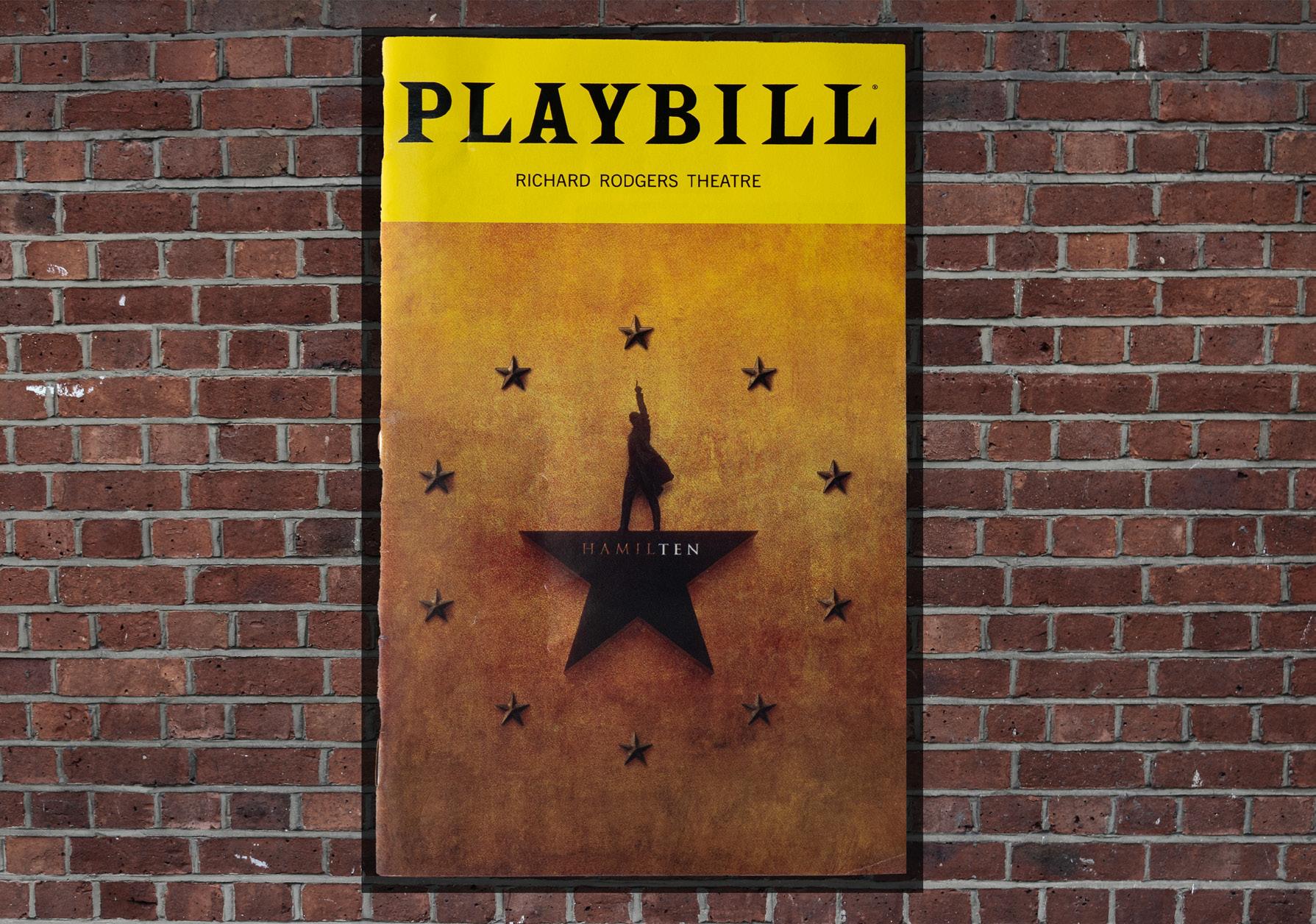
On Tuesday, Aug. 5, history happened in Manhattan as Madame Tussauds New York unveiled Miranda’s first wax figure. Jimmy Fallon presented it on stage at the Richard Rodgers Theatre. Later that night, Miranda joined Fallon and The Roots for a medley of “Hamilton” songs performed using classroom instruments.
Aug. 6 marked the show’s official 10-year anniversary, which was honored with an invite-only performance at the Richard Rodgers Theater with 85 alumni and 23 original cast members present. The event doubled as a fundraiser for Miranda’s Immigrants: We Get the Job Done Coalition. Named after a line from the song “Yorktown (The World Turned Upside Down),” the coalition provides legal aid, social services and advocacy for immigrants through a network of nonprofit organizations. And Burr was right, there is truly nothing like summer in the city, because after the show, Times Square’s West 46th Street was closed off for a surprise block party outside the theater that included food, free “Hamil-ten” tote bags and cast members posing for pictures, while The Roots’ drummer Questlove DJed.
The “Hamilton” summer city celebration continued as a threeweek scavenger hunt — running Aug. 4 to 24 — was held in partnership with New York City Tourism & Conventions as part of the Founded by NYC initiative. Participants downloaded
the HamApp, visiting “Hamilton”-themed locations like Trinity Church, where the real Alexander Hamilton, Elizabeth Schuyler Hamilton and Angelica Schuyler Church are buried. Using the in-app #HamCam with special filters, fans shared their photos with #HamiltenNYC, and three winners were chosen to receive a pair of tickets to “Hamilton” on Broadway.
The “Hamilton” Playbill cover was also updated for the occasion, preserving the iconic silhouette of Alexander Hamilton striking a powerful pose atop a star, but now complete with an additional 10 stars symbolic of the show’s 10 years on stage circling around him.
In addition to that, this summer, “Hamilton,” Playbill and Canva teamed up for a collab contest as they invited fans to design a special edition “Hamilton” Playbill cover using a Canva template, with the winning artwork featured in Playbills at all August performances. The contest ran from June 9 to 25 and received over 3,000 entries. The winning design, inspired by the song “Burn,” was created by Sarah Welch and selected by a panel that included members of the “Hamilton” team. Finalist designs were also showcased both online and in select Playbills.
The Ham4Ham free concert series, held in front of the Richard Rodgers Theater and hosted by Miranda, returned on May 13, 23 and 30 to celebrate the
Miranda was awarded The Town Hall Vanguard Award for his forward-thinking work and shared the stage with many of his collaborators, co -stars and friends from his major works: “Hamilton,” “In the Heights,” Freestyle Love Supreme and “Warriors.” The “Hamilton” performers present included Jasmine Cephas-Jones (Peggy Schuyler and Maria Reynolds in the original cast), Nicholas Christopher (Aaron Burr, and in another production, George Washington), Jordan Fisher (John Laurens and Philip Hamilton), Renée Elise Goldsberry (Angelica Schuyler in the original cast), Mandy Gonzalez (Angelica Schuyler), Julia Harriman (Elizabeth Hamilton), Christopher Jackson (George Washington in the original cast) and Phillipa Soo (Elizabeth Hamilton in the original cast).
If “Hamilton” can teach us anything, it is that the sky is the limit.
anniversary and the Tony Awards season. Initially a short original cast perfomance for fans waiting for the #Ham4Ham Lottery, in which entrants could win $10 front-row seats to the show, the series was reprised with cast members from various Tony-nominated Broadway shows.
The “Hamilton” Playbill cover was also updated for the occasion, preserving the iconic silhouette of Alexander Hamilton striking a powerful pose atop a star, but now complete with an additional 10 stars symbolic of the show’s 10 years on stage circling around him.
May 19 marked the event of The Town Hall Spring Shoutout: A Benefit Concert, aimed to raise funds for Town Hall’s efforts to bring artists to the stage, preserve their historic venue, champion voices that shape the future and expand access to the arts and civic dialogue. During the event,
During the 78th annual Tony Awards — which took place on June 8 at Radio City Music Hall — the original cast of “Hamilton” reunited and performed a medley of songs from the musical to celebrate a decade since the show opened on Broadway. Miranda (Alexander Hamilton) and Odom Jr. opened the performance with the beginning lines of “Non-Stop” and “My Shot,” followed by a joint performance from Soo, Goldsberry and Cephas-Jones of “The Schuyler Sisters.” Next, Daveed Diggs (Marquis de Lafayette and Thomas Jefferson) took the stage for “Guns and Ships,” followed by Jonathan Groff (King George) performing a snippet of “You’ll Be Back.” Okieriete Onaodowan (Hercules Mulligan and James Madison) jumped in with a performance of “Yorktown (The World Turned Upside Down),” after which Odom Jr. performed “The Room Where It Happens” and Jackson performed a remix of “Who Lives, Who Dies, Who Tells Your Story” and “History Has Its Eyes on You” with a brief appearance from Anthony Ramos (John Laurens and Phillip Hamilton). The performance ended with “Non-Stop,” with both original cast members and supporting cast on stage.
Coming this October, Chernow and Miranda are set to collect the National Constitution Center’s Liberty Medal, an award for conviction in promoting freedom and liberty.
If “Hamilton” can teach us anything, it is that the sky is the limit. As one of the most successful musicals in Broadway history, “Hamilton” has earned 11 Tony Awards, seven Oliver Awards, two Emmys, a Pulitzer Prize and a Grammy. It is the 16th-longest-running show in Broadway history, and its innovative blend of hip-hop, history and superb casting has made it a cultural phenomenon with sold-out performances worldwide.
So if you have a spare $1,000 lying around, do not throw away your shot of seeing Odom Jr. on Broadway while you still can. Cannot be in the room where it happens? Do not fret. You can always watch “Hamilton” on repeat on Disney+ from the comfort of your couch or listen to the musical’s sweet melodies in your headphones. Either way, be sure to celebrate any way you can, raising a glass to “Hamilton”’s 10th year on Broadway.

un & ames

Crossword: Cosmic Crosses
24. “Just kidding!”
25. Khloé’s daughter
26. Lessens
29. For most college dorms, it comes in size twin XL
33. Lyrics when one doesn’t know the words?
34. Brazilian soccer star
35. Bodega residente
36. Without much thought
37. Finished, in chess
38. Spoken
39. Celebrities might have big ones
40. Peepers
41. Island nation near Fiji

42. What a longtime renter might be after purchasing their first home (2 Wds.)
44. Vehicle in the left lane, often
45. Found between 40-Across
46. Middle kid of the Duncan family in “Good Luck Charlie”
47. “Oh ____! My steak is too juicy and my lobster too buttery!”
50. Soprano’s solo
51. Yap
16. “Pics ___ ___ didn’t happen!” (2 Wds.)
17. Solar, wind and geothermal energies, for three
19. Embroidery essential, en Español
20. Some Fordham instructors (Abbr.)
21. Days, on 10-Across
22. Repeater of others’ ideas
Connect the Dots
DAMIAN GROVE
54. South American empire known for terrace farming and freeze-drying
55. *Where the shaded clues are located? (2 Wds.)
58. Science guy Bill and makeup artist Ben, for two
59. “For the death ___ ___!” (2 Wds.)
60. Reef stuff

4. Smelted stuff
5. “Santa Fe” musical
6. Not royal nor common
7. Exams for Hogwarts fifthyears (Abbr.)
8. Migration formation
9. Declared
10. Big name in nursery rhymes (2 Wds.)
11. Prefix meaning 10-Across
12. Stir (up)
13. *
18. NASA go-aheads (Hyph.)
23. Counterpart to a bulk
24. High praise for a focused kindergartner (3 Wds.)
25. They may be of the tall, folk or fairy variety
26. *Green card holder
27. A sheriff’s might be in the shape of a 13-Down
28. Permit
29. 39.37 inches, approximately


50. Prefix with sphere

51. Attire
52. Smoothie bowl superfruit
53. *Distinctive feature of 1-Across
56. Roswell sighting (Abbr.)
57. ____ favor

Ramses in Space!
BY DAMIAN GROVE
The year is _______________ and Ramses’ ____________________ class is on the ____________________ campus at ____________________ on ____________________. On this particular day, Ramses slept through his alarm because he was up late ____________________ and missed the Ram Rocket, meaning he has to take the intergalactic D train. Before rushing down to the Columbus Circle space station, he puts on a vintage spacesuit with the 2025 Fordham logo on it, now _______________ logos outdated. Ramses pays _______________ dollars at the turnstile and barely jumps onboard before takeoff.


Once the spaceship takes flight, Ramses puts in his AirPods and queues the latest AI-developed album by ____________________. When the ship makes its first stop on ____________________, Ramses gets out of his seat to let a(n) ____________________-like creature sit. Despite floating in midair, Ramses falls asleep and misses his stop. When he wakes up, he finds himself in the ____________________ galaxy on the planet ____________________, which is _______________ stops after his. Accepting his defeat, Ramses levitates down to the surface and grabs lunch at local galactic fast food chain, ____________________ ____________________. Better luck next time, Ramses!
